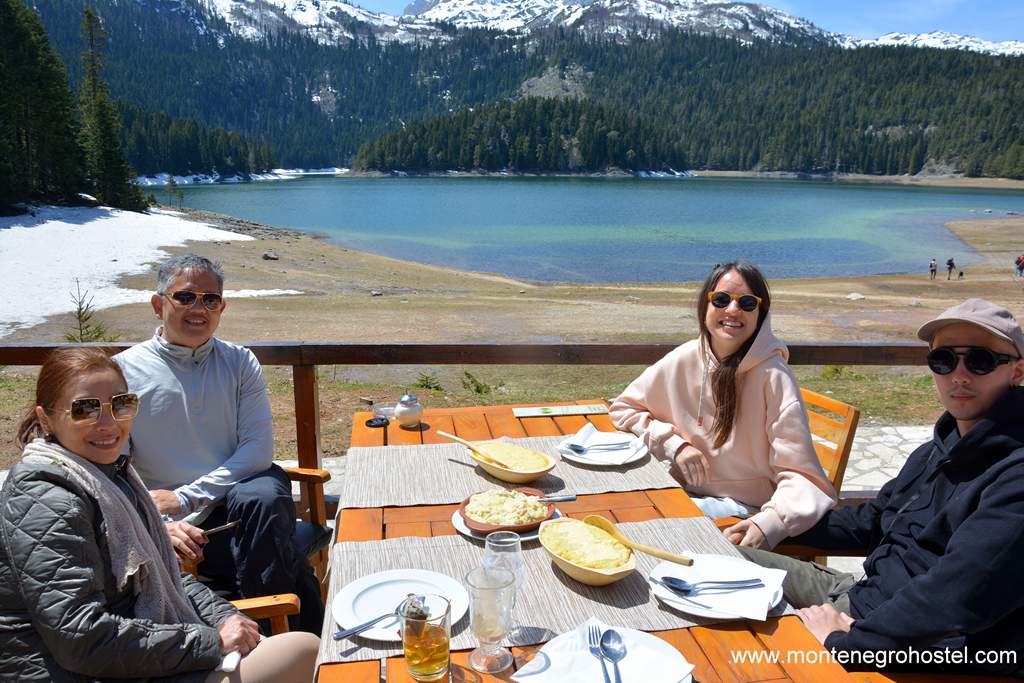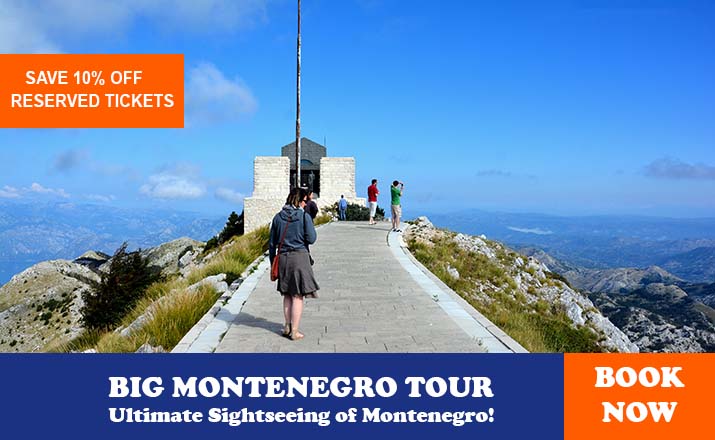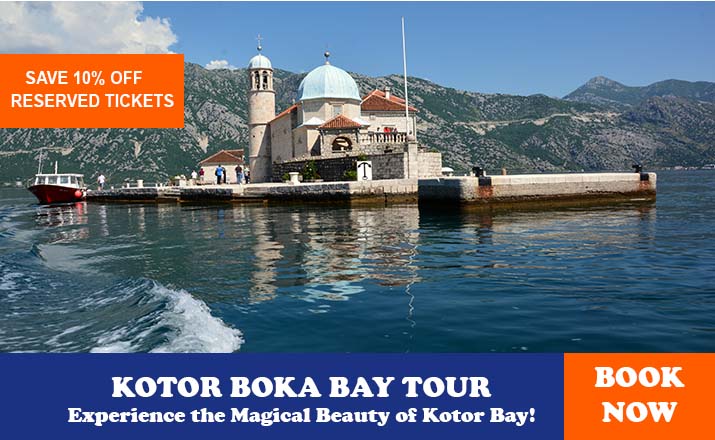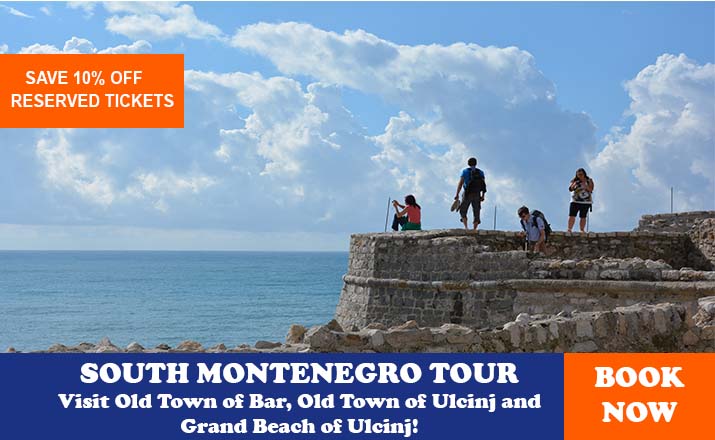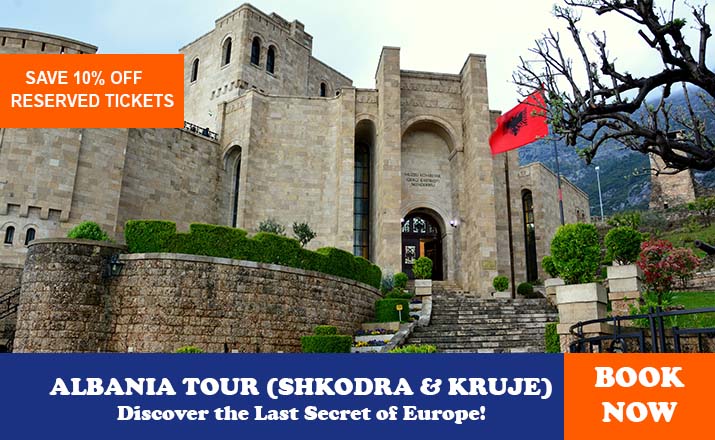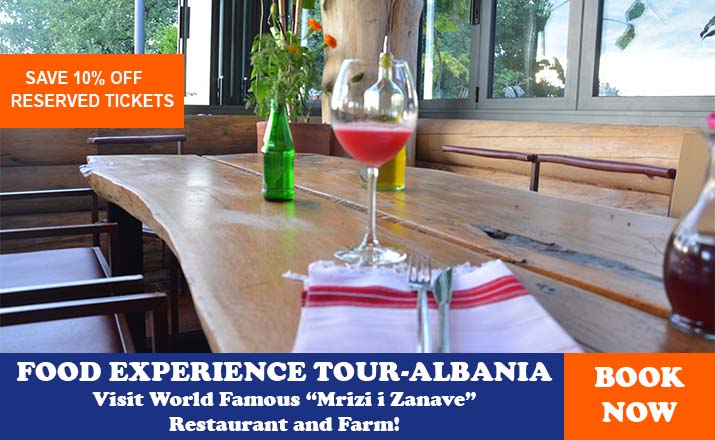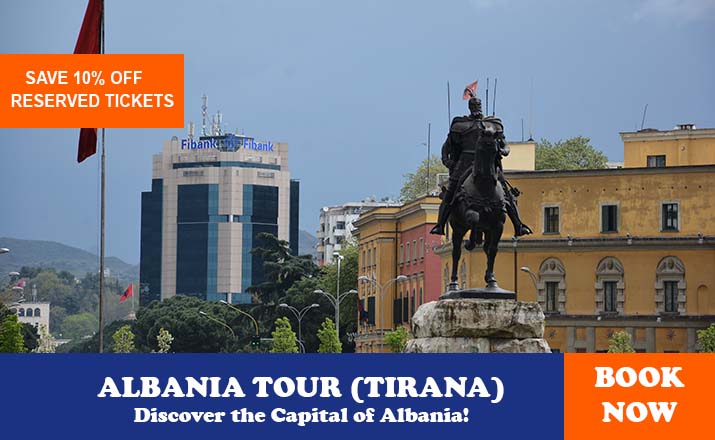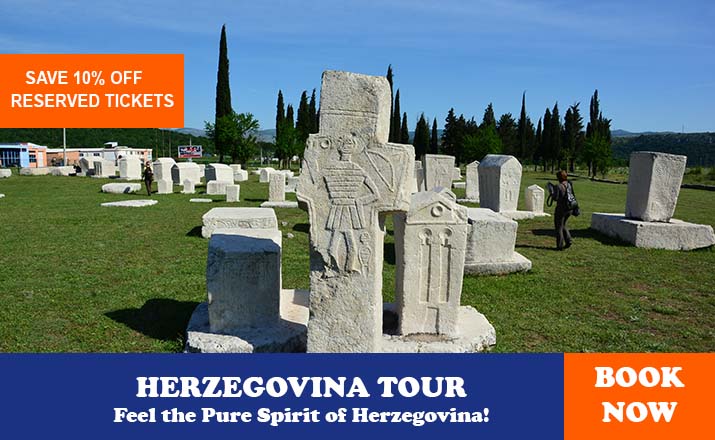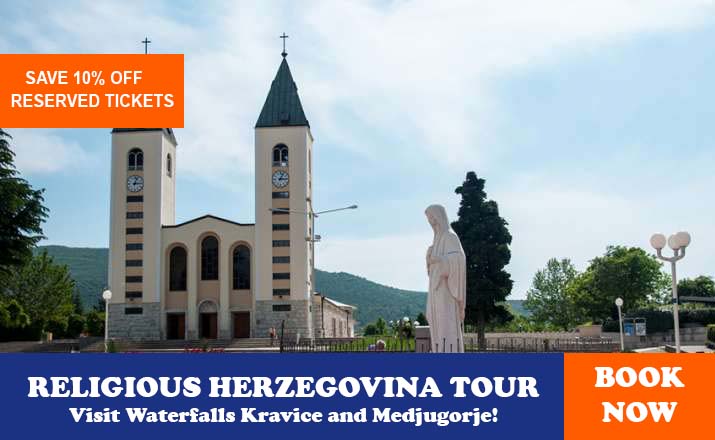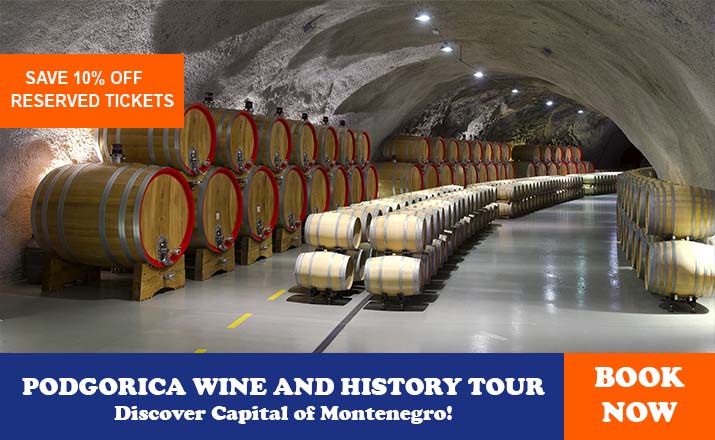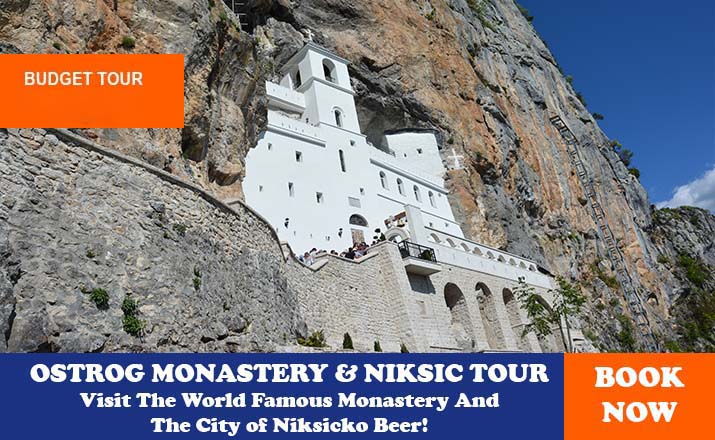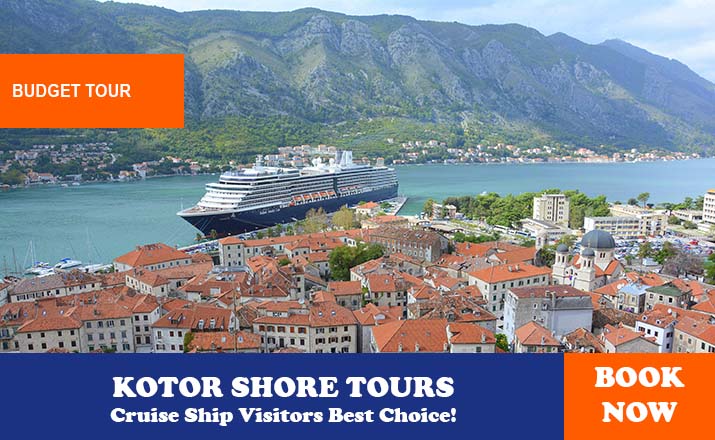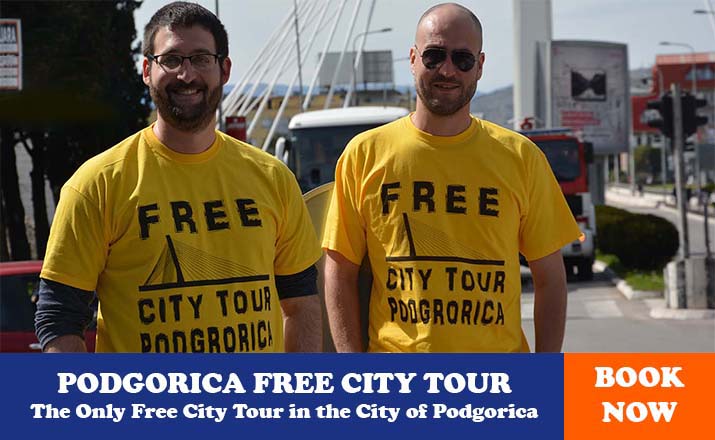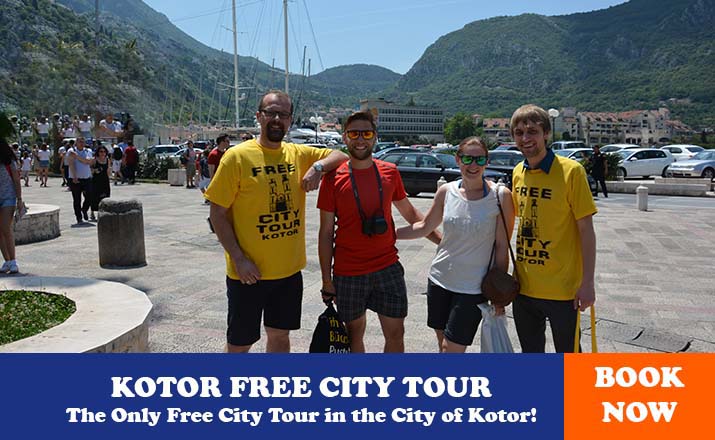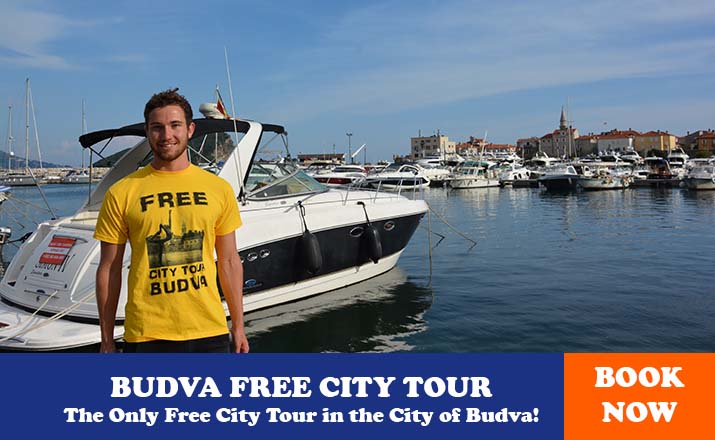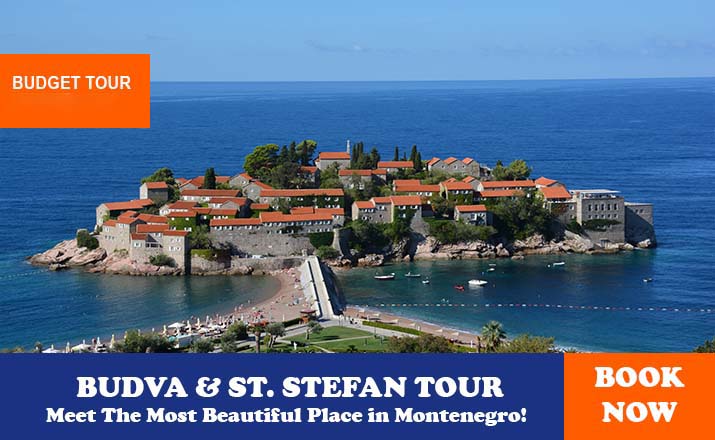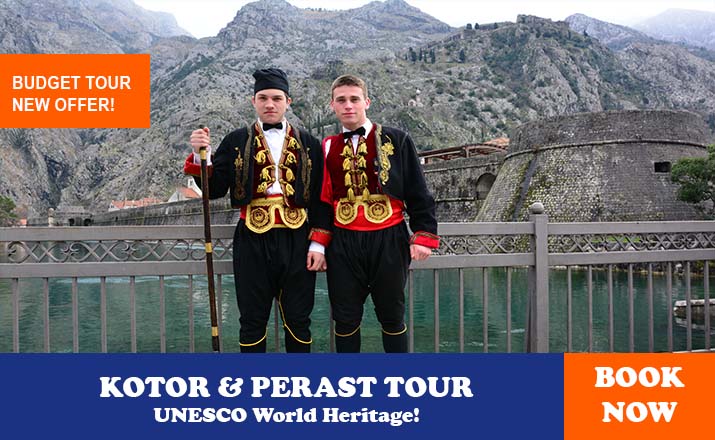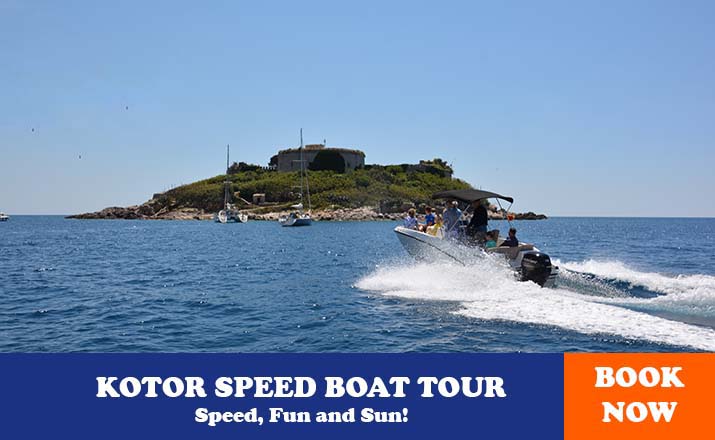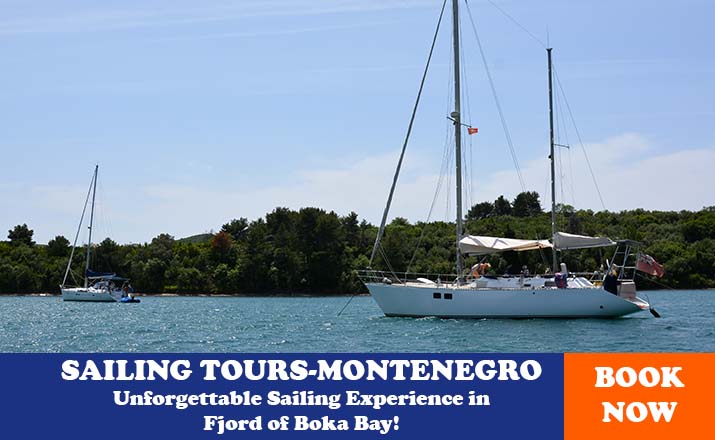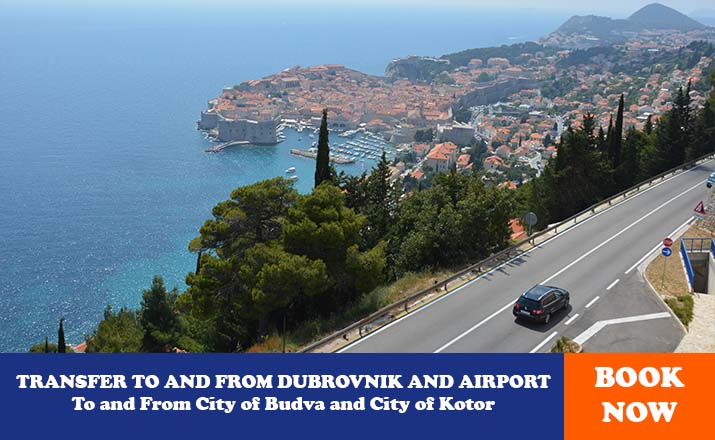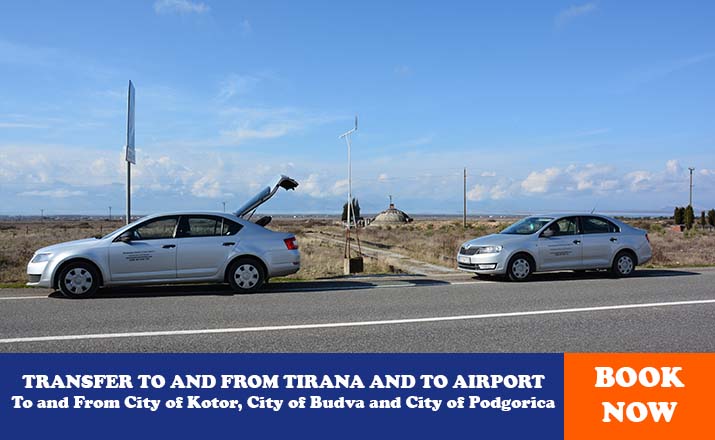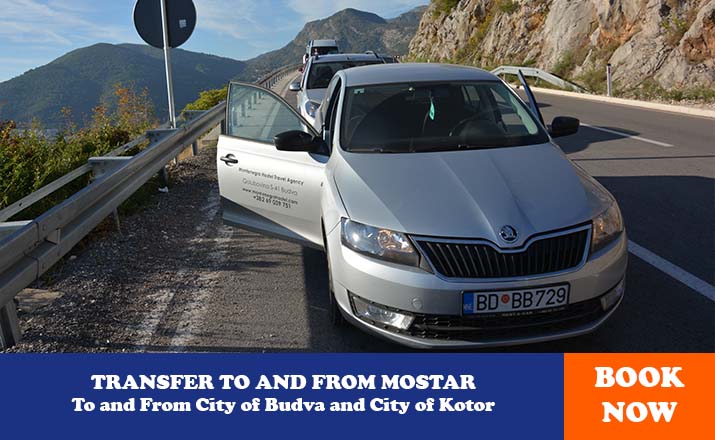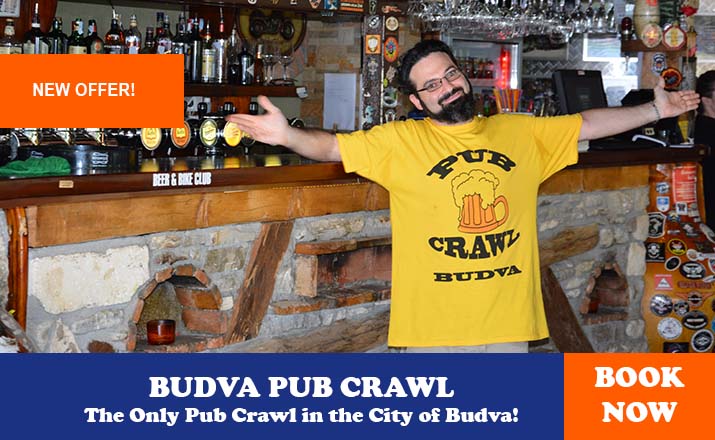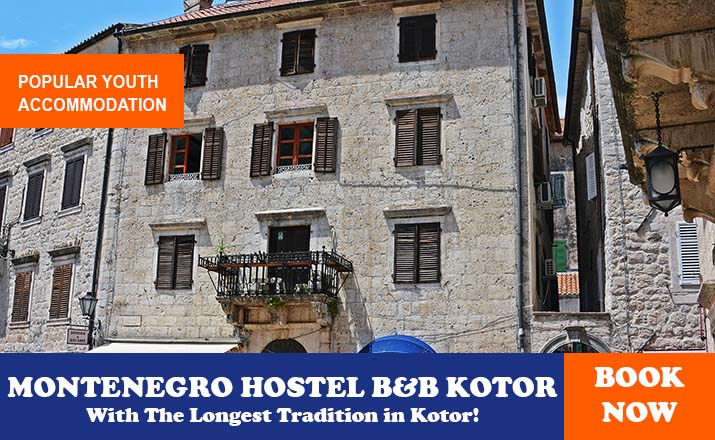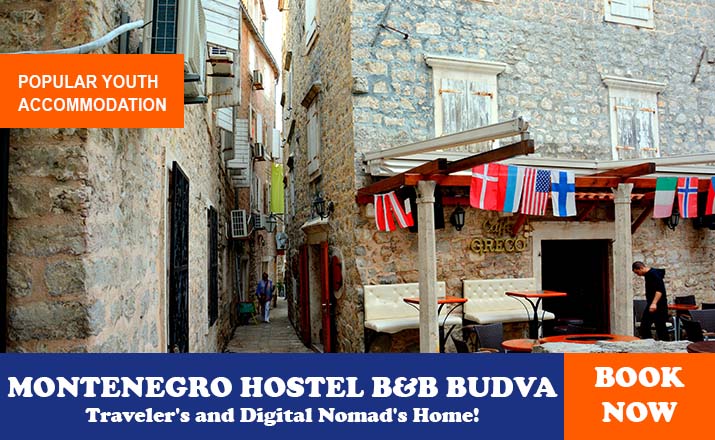ABOUT FOOD AND DRINK IN MONTENEGRO
ABOUT FOOD AND DRINK IN MONTENEGRO
It is hard to imagine a Montenegrin from the older days caring too much for what he eats. Firstly, because, with a few exceptions, he didn't have much to eat, and secondly, since, until well into the 20th century, food was considered just as a means of survival, not for pleasure. On the other hand, in search of food, people prepare meals in many imaginative ways. Bearing this in mind, you will appreciate the traditional Montenegrin cuisine, which is all about simply preparing straightforward, tasty food that keeps you well fed. The climate and geographic conditions split the land into two utterly different zones of traditional cookery: the Adriatic one, restricted to the narrow strip by the sea, and the mountain continental zone. The staple foods of the continental part of Montenegro are potatoes, corn, and cereals, but above all, the dairy products from sheep and cows, the most precious possession of every Highlander.
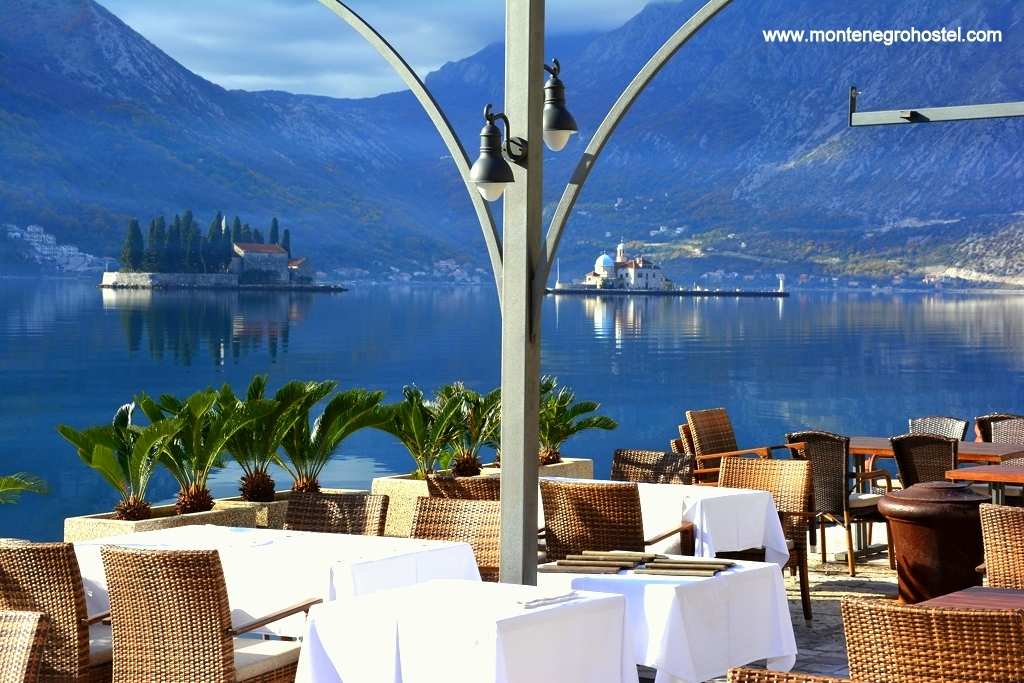
Since milk was difficult to preserve, it was, by and large, converted into cheese (sir). Domestically prepared cheese from a range of softer full-fat milk is still the most common type enjoyed all over the country. Its forms are not yet standardized, and hence it covers a range from softer (but not creamy), young cheese (mladi) to semi-aged (stari), which is never aged to such an extent that it can’t be cut with a fork.
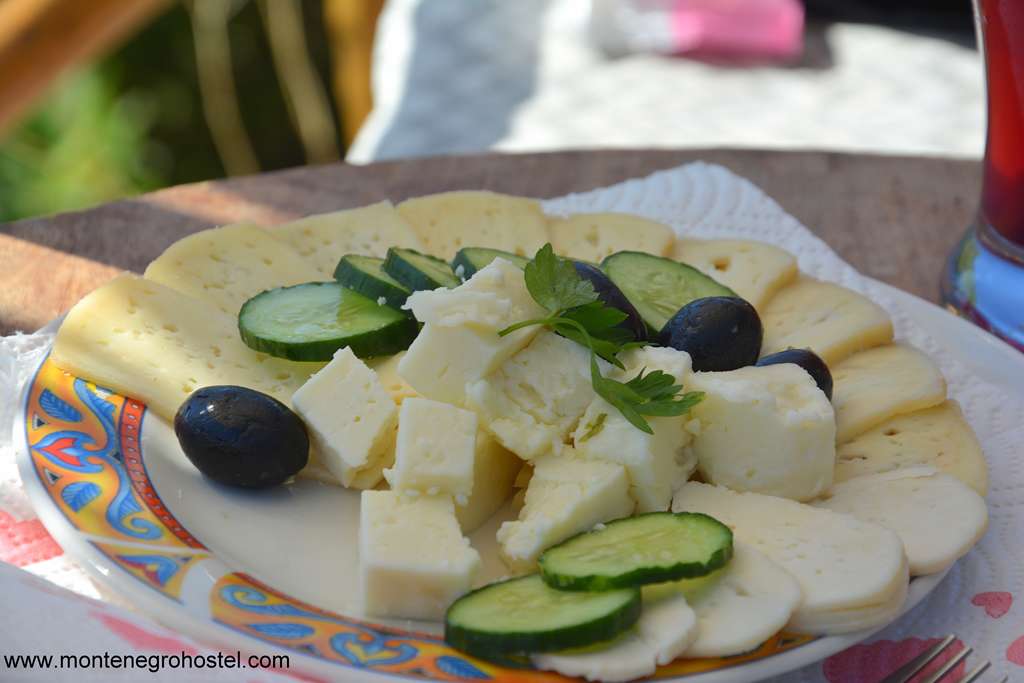
Recently, more people have been encouraged to once more produce prljo, a traditional soft cheese that is low in fat. Kisjelo mlijeko (literary “sour milk”) is a kind of yogurt so thick that it is eaten with a spoon. It is served with most simple meals or consumed on its own as a refreshing and tasty snack or as a starter. The most cherished dairy specialty is kajmak or skorup, a very fatty cream of a strong flavor, which is eaten on its own, mixed in many traditional meals, but also added to many new dishes as a quintessential ingredient that adds that local feel.
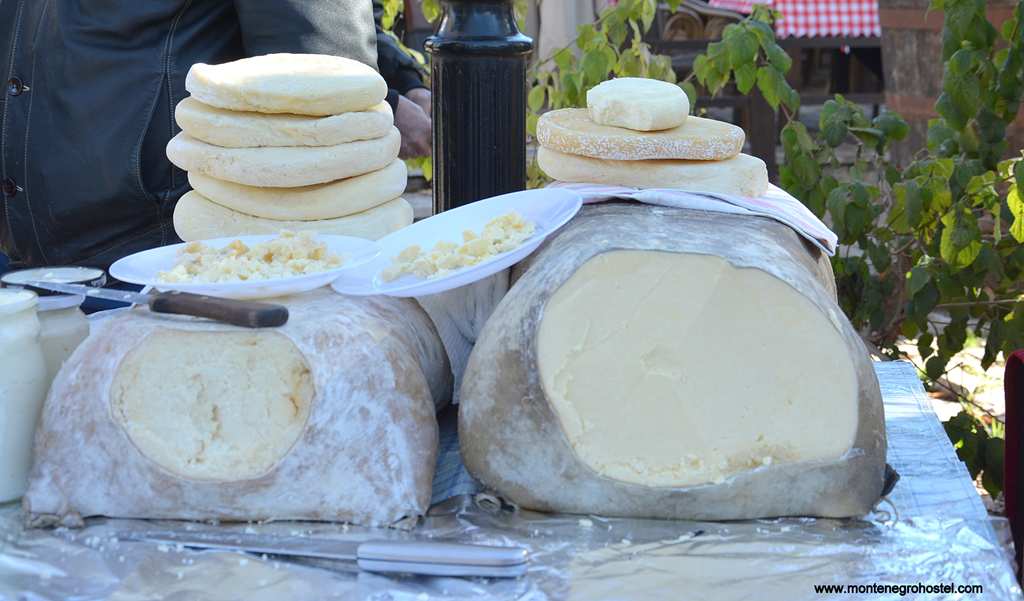
One of the old dishes eaten with kajmak is kačamak. It is a tasty mush usually prepared from cornmeal, similar to Italian polenta. When it is referred to as "smočani" that means that it is cooked with melted cheese and kajmak. Similar to kačamak is cicvara, where flour is cooked in melted kajmak. When both dishes are well-prepared is impossible to resist them, but bear in mind that they are also very heavy and that you’ll need to be really hungry to eat a whole portion.
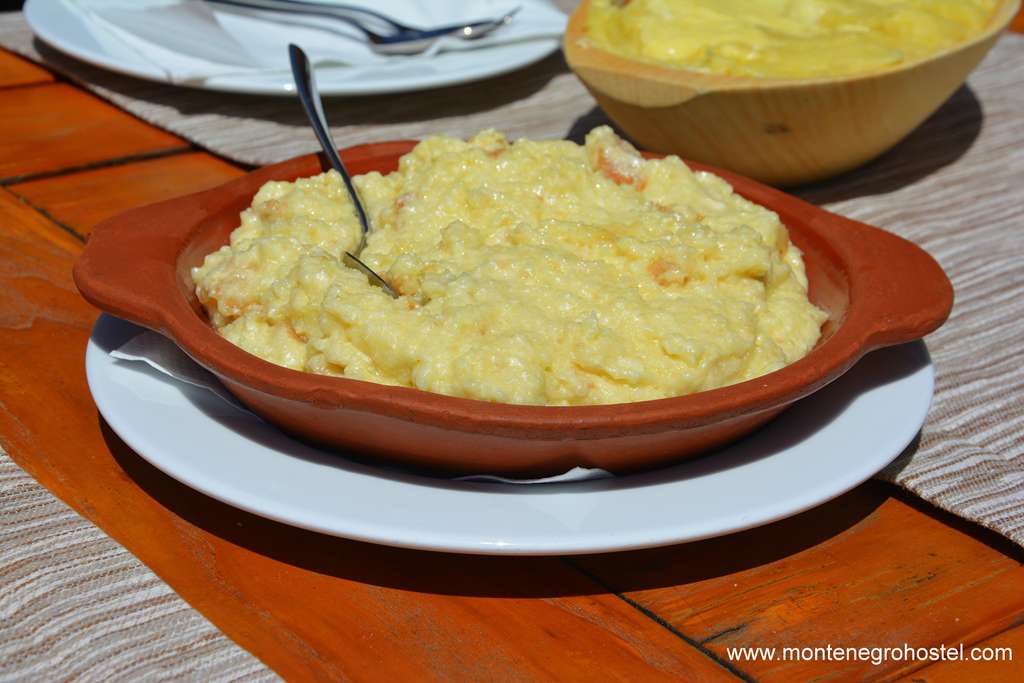
Popara or masanica is prepared from stale bread, cheese, and kajmak, cooked slightly in boiling water. This meal is never caught on menus as a dish in restaurants, but it is frequently eaten at home. These three classic Montenegrin dishes were once considered meals appropriate for lunch, but are nowadays also eaten for breakfast or dinner. To drink with these, try varenika- cooked milk or grušava, its saltier, and fattier version.
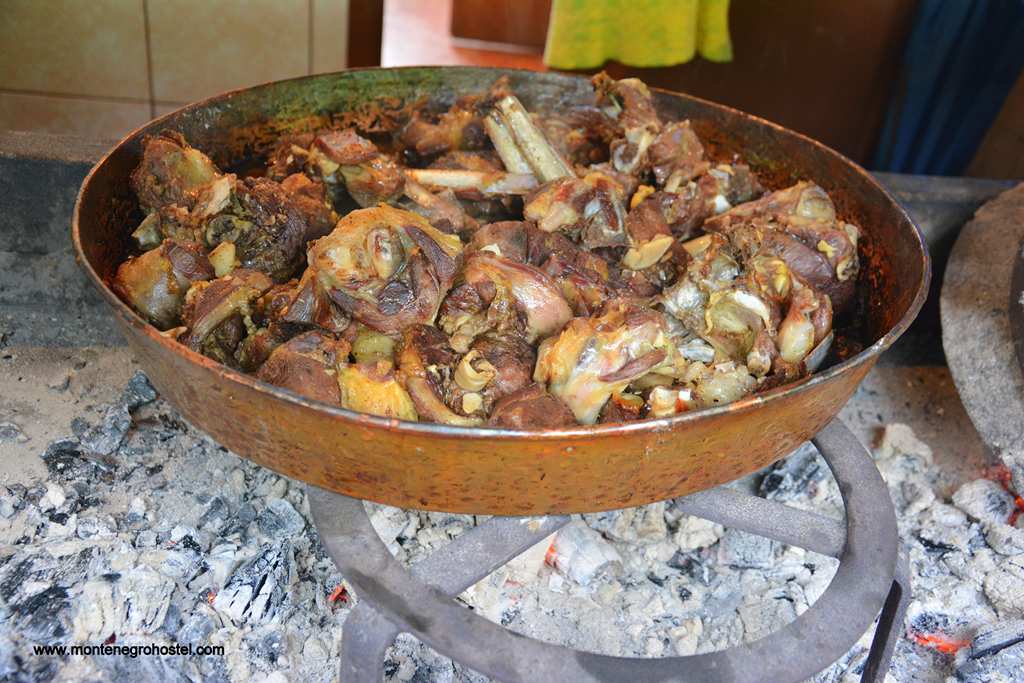
As the sheep and goats were too valuable for their milk, wool, and skin, they were rarely slaughtered for meat, which was eaten by old Montenegrins only on holidays and by the well-off. Perhaps as a reaction to this forced semi-vegetarian diet practiced for many centuries, modern Montenegrins are great lovers of meat, which is often eaten on its own and in large quantities.
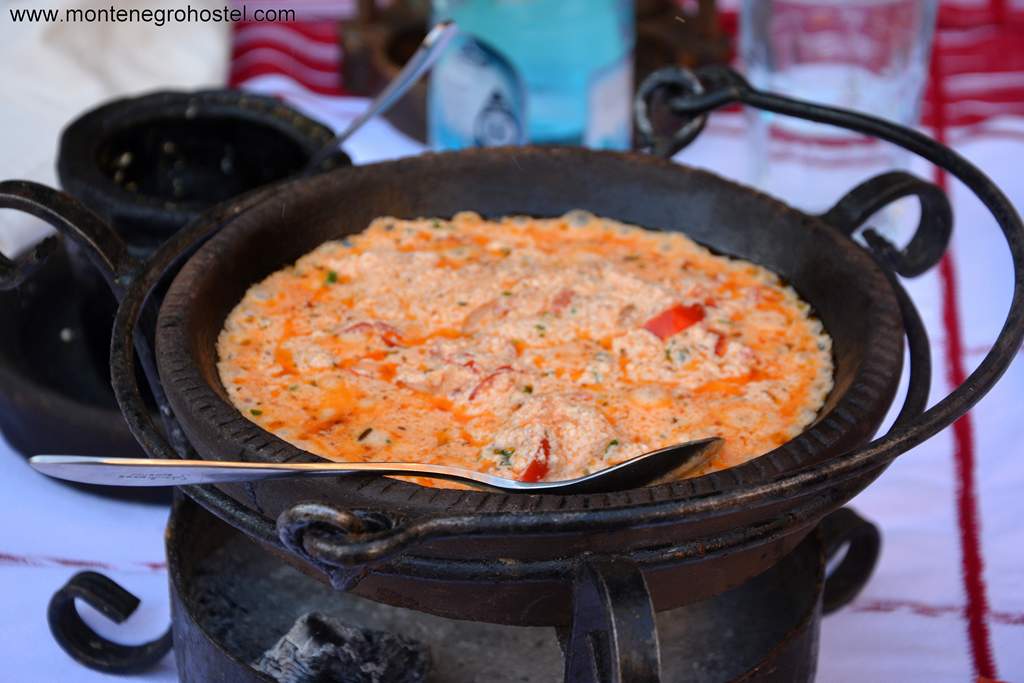
The meat (meso) most commonly eaten in the interior is mutton (ovčetina) or the highly-praised lamb (jagnjetina) prepared in many tasty ways, such as dried (sušena), cooked (kuvana), steamed (na pari), cooked in milk (u mlijeku), or roasted in a pot placed under the smoldering coals (ispod sača). Veal (teletina) is a more recent newcomer, while chicken (piletina) and pork (svinjetina) play a minor role in traditional cookery but are found in some classic specialties from modern times.
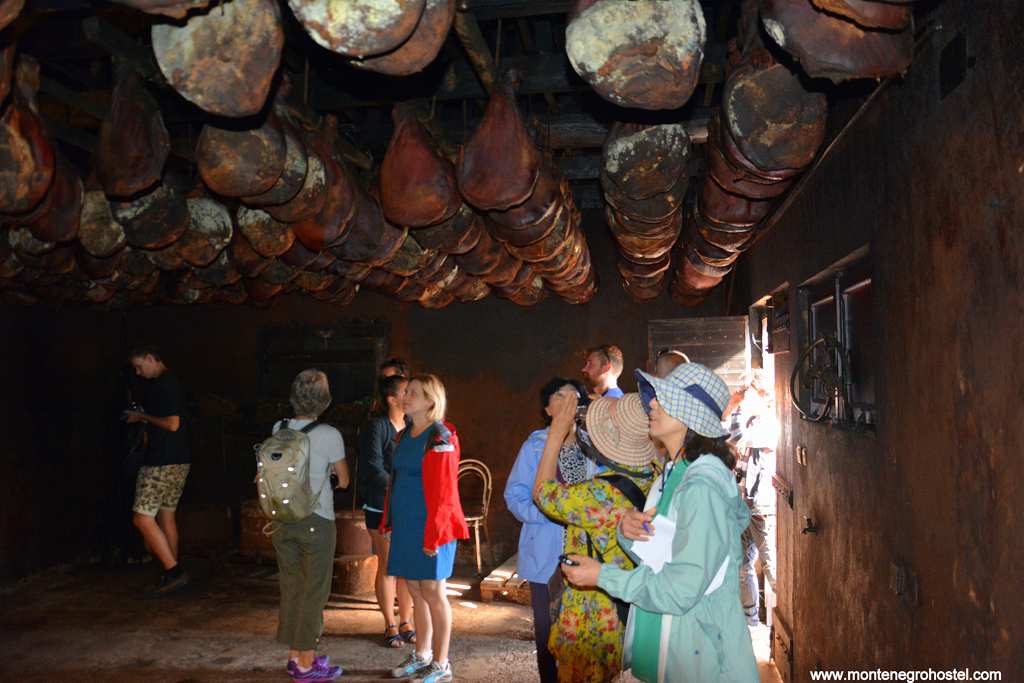
One thing you should not miss is pršut. That is ham, salted and then smoked for a long time, and served thinly sliced to enhance its delicious taste. A delicacy that never fails to delight the locals is spit roasts (pečenje). Today, they are in demand at almost all celebrations, while some restaurants, mostly highway inns, have built their fame around them, and even though they offer various meals, most of their guests arrive only for this indulgence. The most usual type of spit roast in Montenegro is lamb (jagnjetina) or piglet (prasetina), both ordered by the kilo, which is a bit of a gamble since the meat comes with bones and other hardly edible parts.
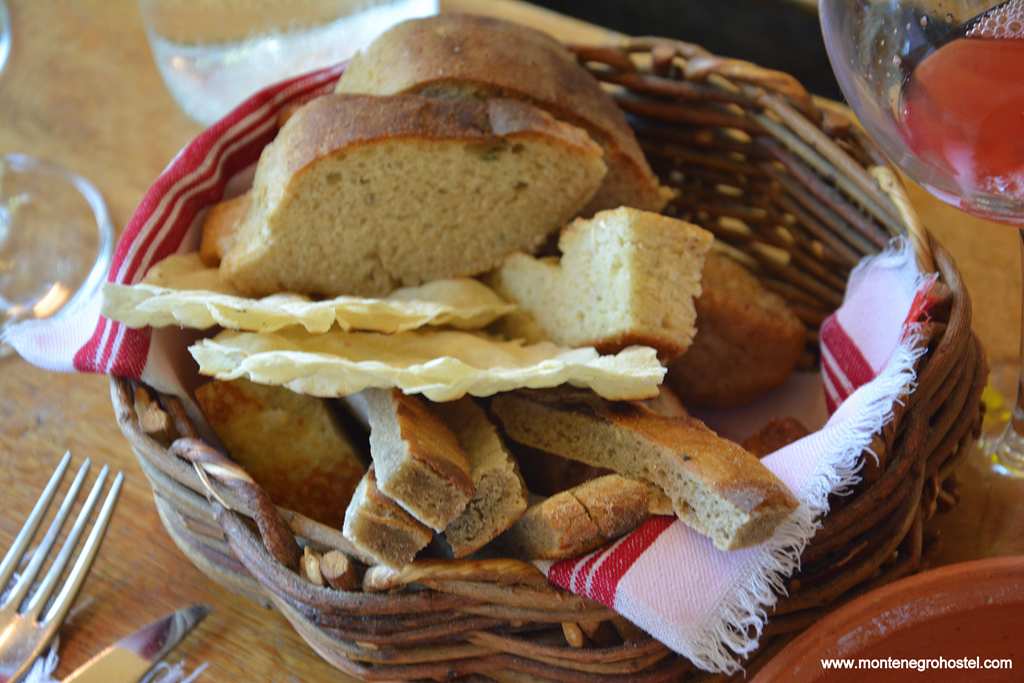
Bread (hljeb) in the old times used to be baked out of barley or, later, corn. Today, you can consider yourself lucky if you find these, but wheat bread baked in restaurants, mostly "ispod sača", is a delicacy of its own. Proja is tasty cornbread, rich in fat, and sometimes with cheese added to it.
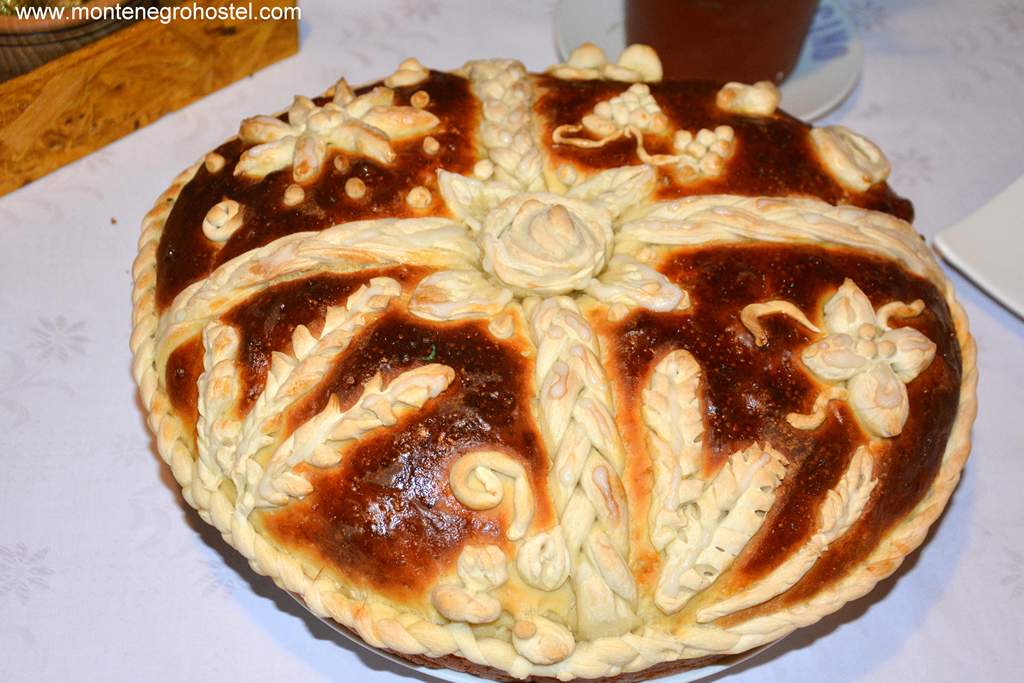
Another bread-like snack is priganice, a kind of doughnut served with cheese, kajmak, honey, or jam. It is almost impossible to imagine a complete meal without the ever-popular pies (pite) such as gužvara and sirnica with cheese and eggs, zeljanica with spinach, onions, and cheese, krompiruša with potatoes, or heljdija from buckwheat, which is another crop adapted perfectly to the harsh mountain climate. A special kind of pie is izljevuša, whose mixed dough is spilled into to bowl and then baked.
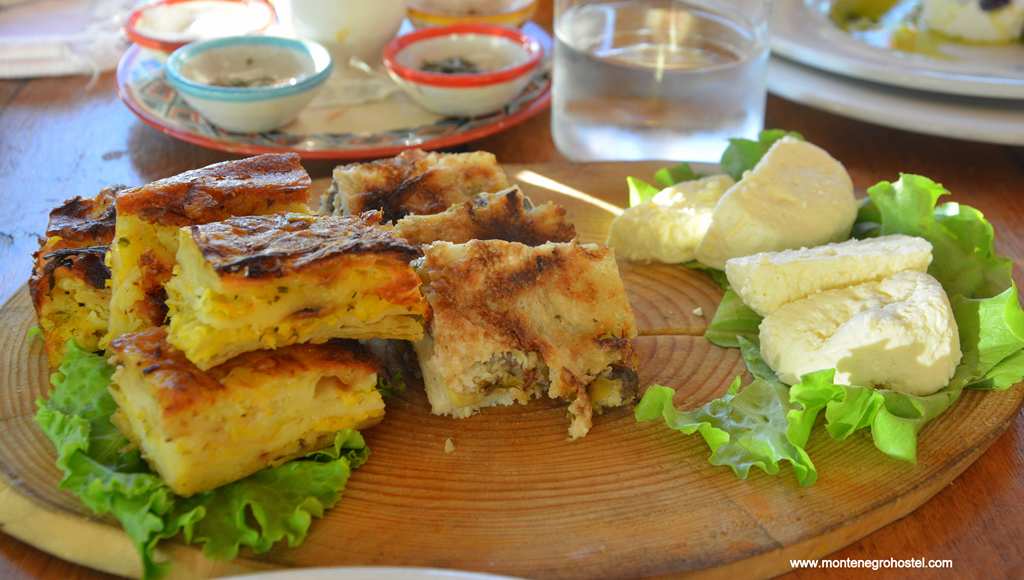
The most typical vegetable (povrće) in Montenegro is the potato (krtola or krompir), which was introduced in the early 19th c. From that time on, enhancing the diet prevented famine in difficult years. Another well-known vegetable in Montenegro is collard greens (raštan). It is a plant of the cabbage family, but of somewhat wilder appearance and taste. Cooked with potatoes and dried mutton, it makes a meal of distinctive taste.
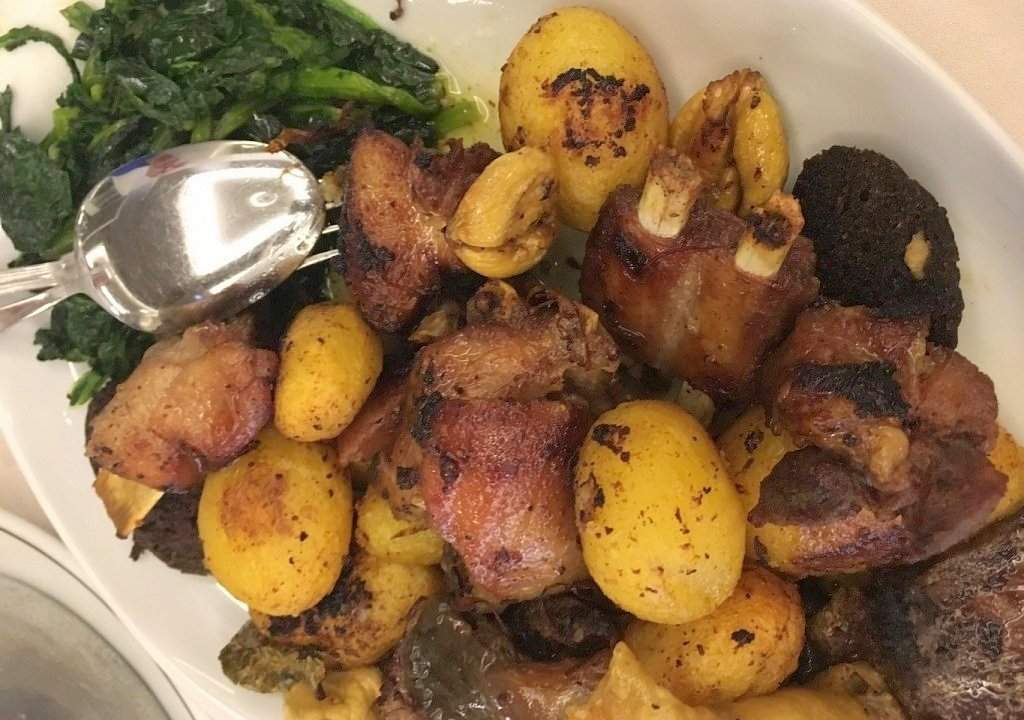
A dish of similar taste to this one is japraci, where veal and rice are rolled in leaves of collard greens. Nettles are also consumed as a delicacy, enjoyed mostly in the form of soup (čorba od kopriva). Beans (grah or pasulj) are consumed in several varieties, like a thick soup with dried meats (čorbast pasulj) or roasted with lots of onions (prebranac).
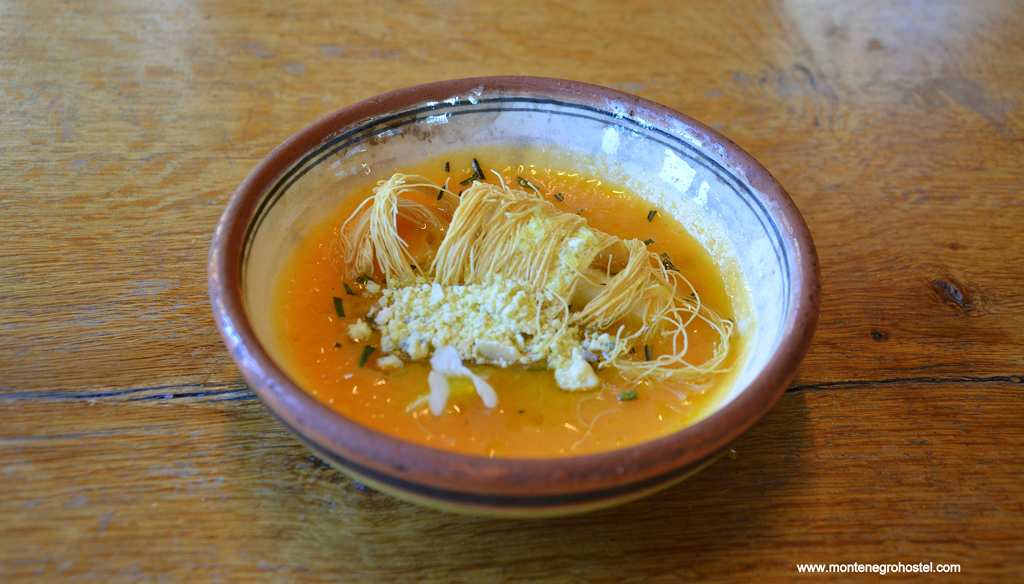
Fish (riba) plays a minor role in Montenegrin continental cuisine since most of the areas were far from sizable rivers. However, the vegetarian fare carried through the long and strictly observed fasts in the Orthodox Church, mostly before Christmas and Easter, was enhanced by river and lake fish. From the native river species, trout (pastrmka or pastrva) and sprouts (mladica) are the only ones to make it to restaurant menus. The situation in continental Montenegro differs only in the region around Skadarsko Lake, which is incredibly rich in fish, primarily bleak (ukljeva), carp (krap or šaran), and snipe (škobalj, rarely consumed these days). The traditional way of preparing bleak is to dry it above the fireplace (dimljena) before grilling it, while carp is often fried together with prunes or consumed smoked.
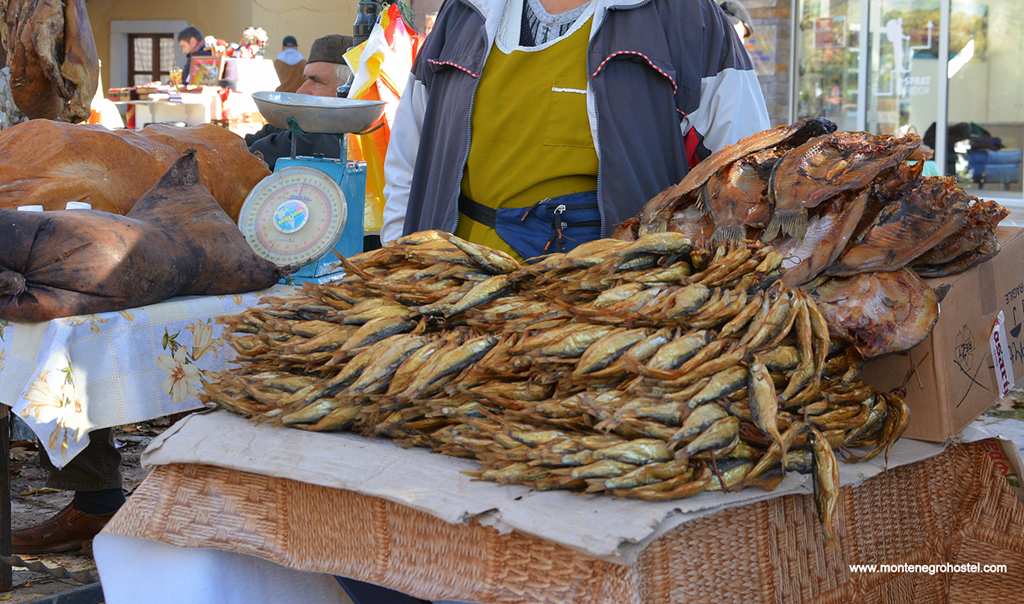
In contrast to the continental part, the popular diet in the Adriatic region was always based on fish from the sea. The range of fresh sea fish in any decent restaurant is wide: hake (oslić), mackerel (skuša), red mullet (barbun), bass (brancin), gilt-poll (orada), dentex (zubatac), groper (škarpina), eel (jegulja), sole (list), etc. Sometimes they are priced by the kilo, and you can choose a fish proportional to your appetite. The larger fish, such as swordfish (sabljarka) or ray (raža), is served sliced without bones. The simplest way of preparing, but also the best to retain the taste of the fish, is to grill it smeared with spiced olive oil (na žaru or more unusually sa gradela).
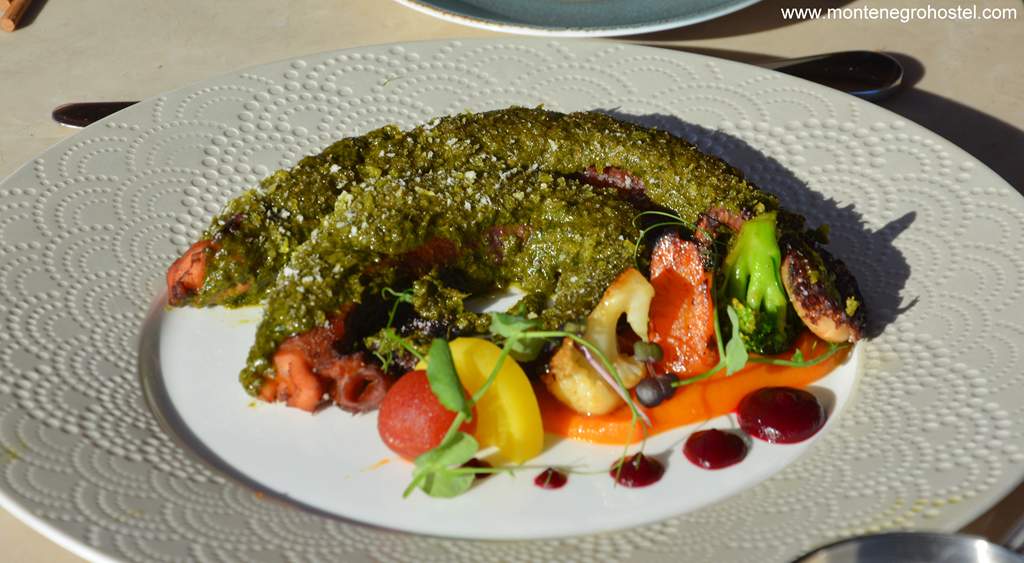
As a side dish with these, you can try risotto (rižoto), sometimes also colored by squid-ink (crni rižoto), chard (blitva) with potatoes, or a simple potato salad. The other ways to enjoy your fish are pržena, fried in olive oil, vinegar, and spices, then "pohovana", fried in breadcrumbs, or, typically for Montenegro, cooked from a pot kept under the coals (ispod sača). Fish soup (riblja čorba) is prepared from various kinds of fish cooked for a long the better, with everyday chefs keeping their ingredients and their proportions a secret.
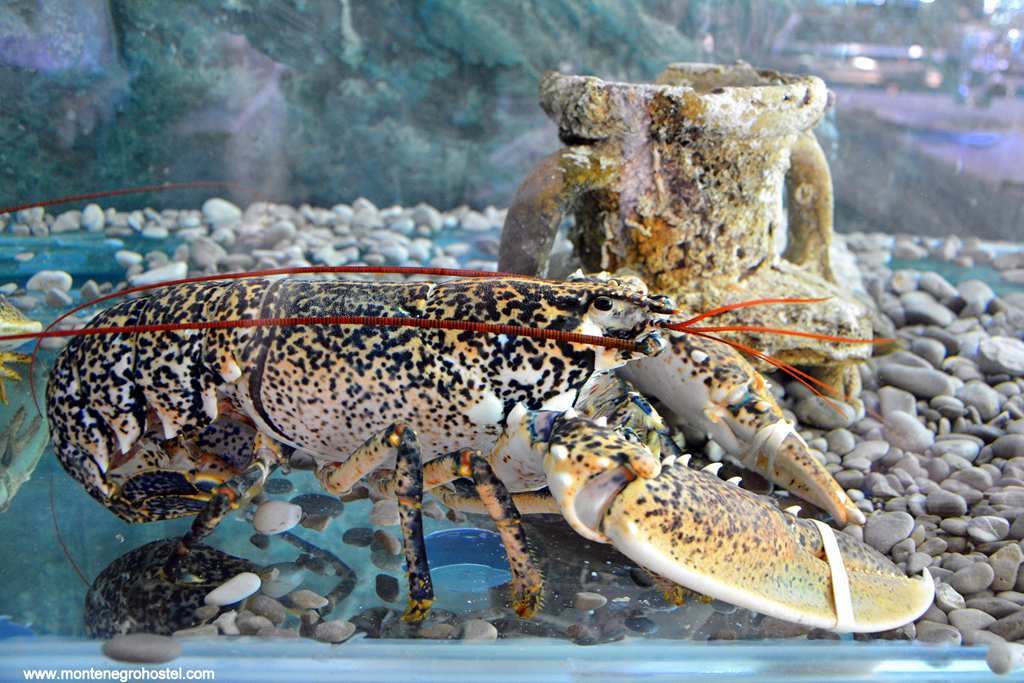
Other fruits of the sea are also frequent on menus like squid (lignje), scampi (škampi), rose shrimps (kozice of gambori), and lobster (jastog), being the usual selection. Octopus (hobotnica) can be prepared in several tasty ways, but is most popular as a salad (salata od hobotnice) served as a starter. Mussels (mušlje or dagnje) are, as a rule, eaten "na buzaru", stewed in a tasty sauce of wine, oil, garlic, and parsley.
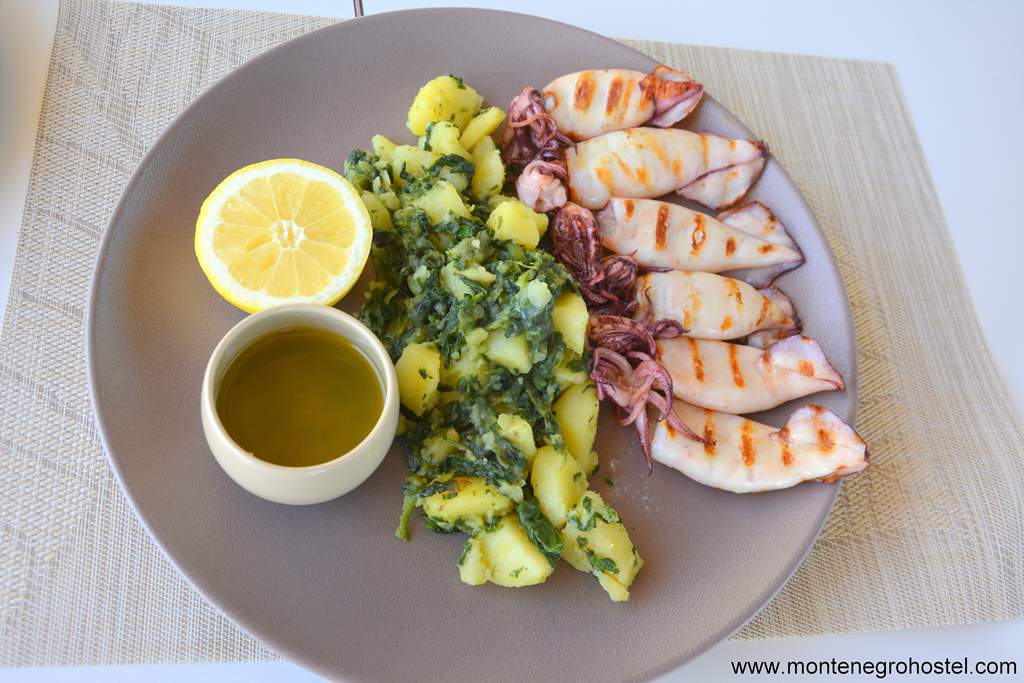
The second most important ingredient of maritime cuisine is olives (masline), still grown in many areas along the coast (mostly around Bar to Ulcinj as well as on the Luštica peninsula), and this oil is the main oil for all chefs over the Adriatic. One of the specialties here is the old, ripe cheese kept in olive oil (sir iz ulja). As with all the other delicacies from the seaboard, this mixture is also seasoned with aromatic herbs that grow in abundance on the hillsides, such as rosemary, sage, parsley, etc. These are also important ingredients in creating "pašticada", a beef stew served with makaruli-macaroni of black wheaten flour. Two specialties specific to the town of Ulcinj are bamija (okra) served with veal, and "imam bayildi"-eggplant braised with onions, garlic, tomato, and spices.
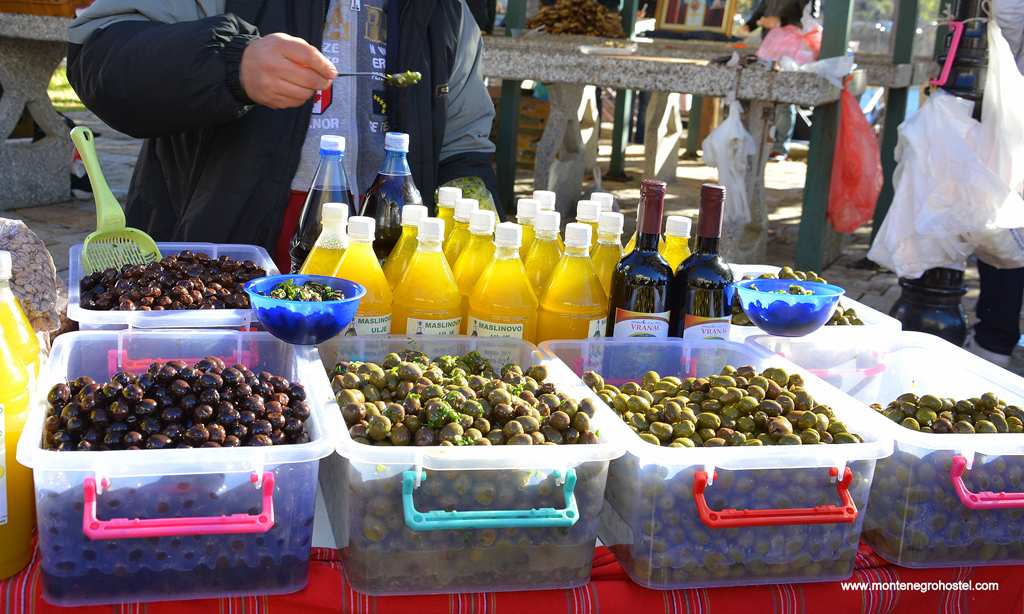
In the last century, Montenegrin cuisine outshone its previous simplicity. Dishes from neighboring lands were adopted, and others were created from local ingredients in a more modern fashion. The traditional dishes that are found all over the Balkans became familiar in Montenegro to such an extent that nobody considers them foreign anymore. One of the most popular is sarma, sauerkraut rolls stuffed with minced meat and rice. They are prepared mostly at home in large quantities, and people live on them for days, as it is considered that they get better with time.
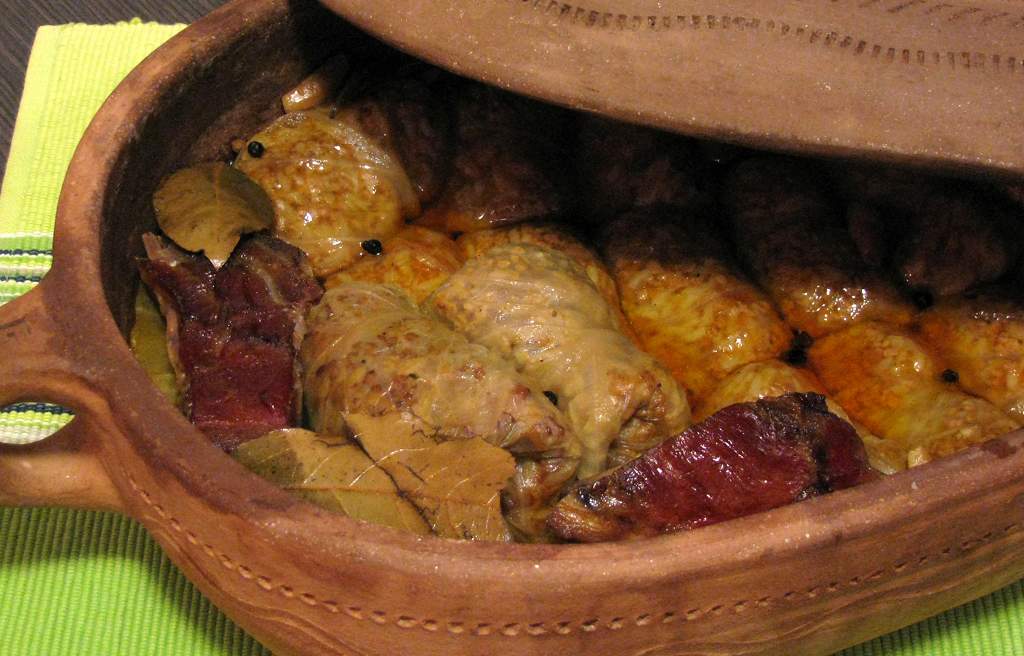
Punjene paprika is bell peppers stuffed with minced meat, rice, and tomatoes. Djuveč is a rich casserole in which you will find meat accompanied by potatoes, green beans, tomatoes, onions, eggplant, etc. Pilav is a dish of oriental origin with sliced chicken baked together with rice and onion. Sauerkraut (kisjeli kupus) is also featured as a popular winter salad sprinkled with hot paprika. Turšija is a name for various kinds of vegetables (cucumbers, carrots, cauliflower, tomatoes) which are pickled in brine and eaten during the winter. In the summer, fresh garden salads of tomatoes, cucumbers, onions, and peppers are often consumed.
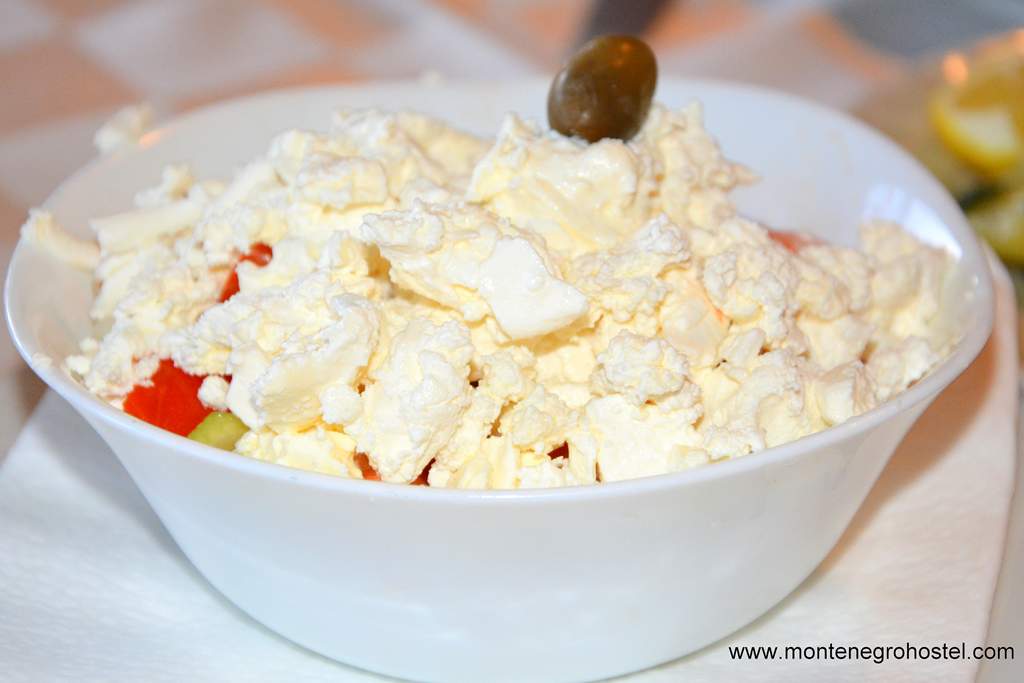
The most popular amongst them is a relative newcomer from Serbia –šopska salata, made out of all these vegetables and then covered with soft cheese. A popular addition to many dishes is ajvar, a pasty mix of baked peppers, eggplant, and garlic similar to salsa.
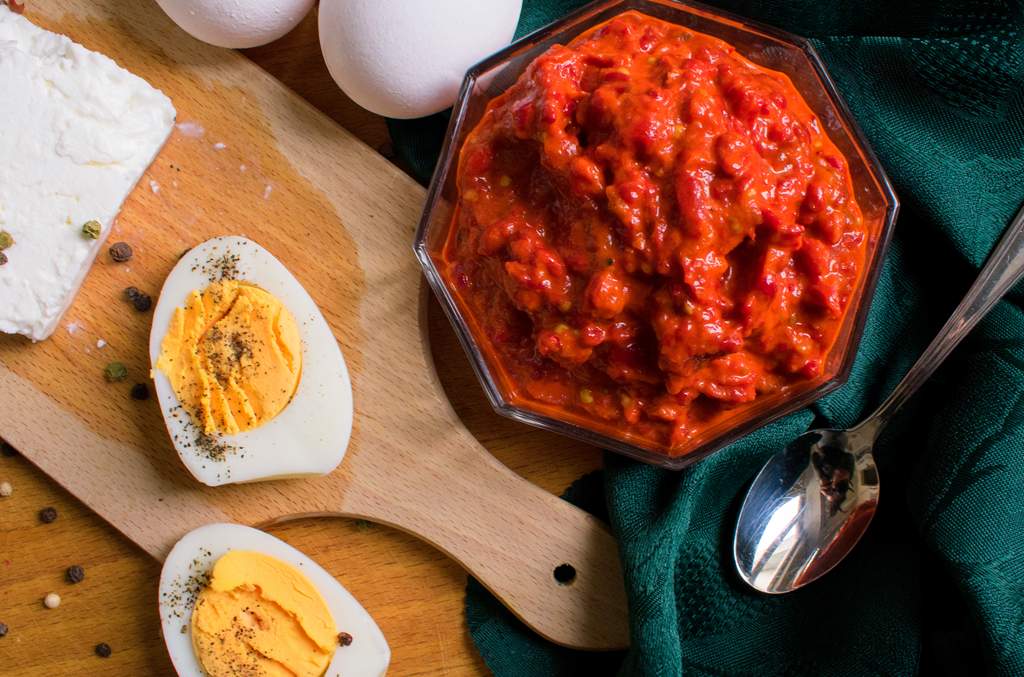
The most popular soup in restaurants these days is teleća čorba, a creamy concoction of vegetables and veal that melts in the mouth. Similar to it is the mushroom soup (čorba od pečuraka), while pileća supa is clear chicken broth.
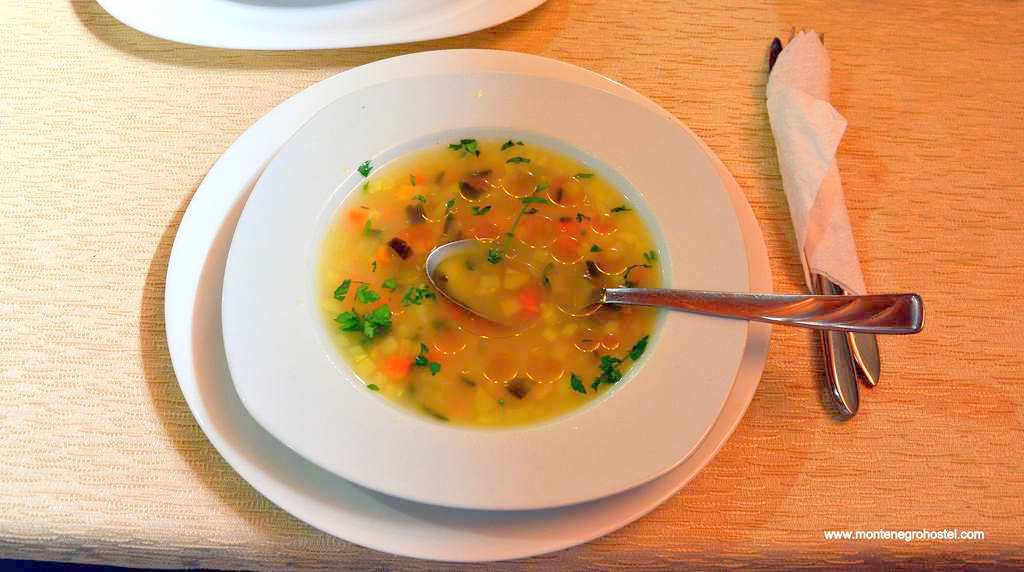
The most-loved new arrival is grilled meat (roštilj) called commonly leskovački, named after the southern Serbian town from which it gets its distinctive form and excellent taste. Almost all of the places in which you can eat will have some specialty from the grill, and though these can considerably vary in quality, they are very tasty. Grilled meat Leskovac-style is also the base for many fast-food eateries and kiosks where the young population can live for days.
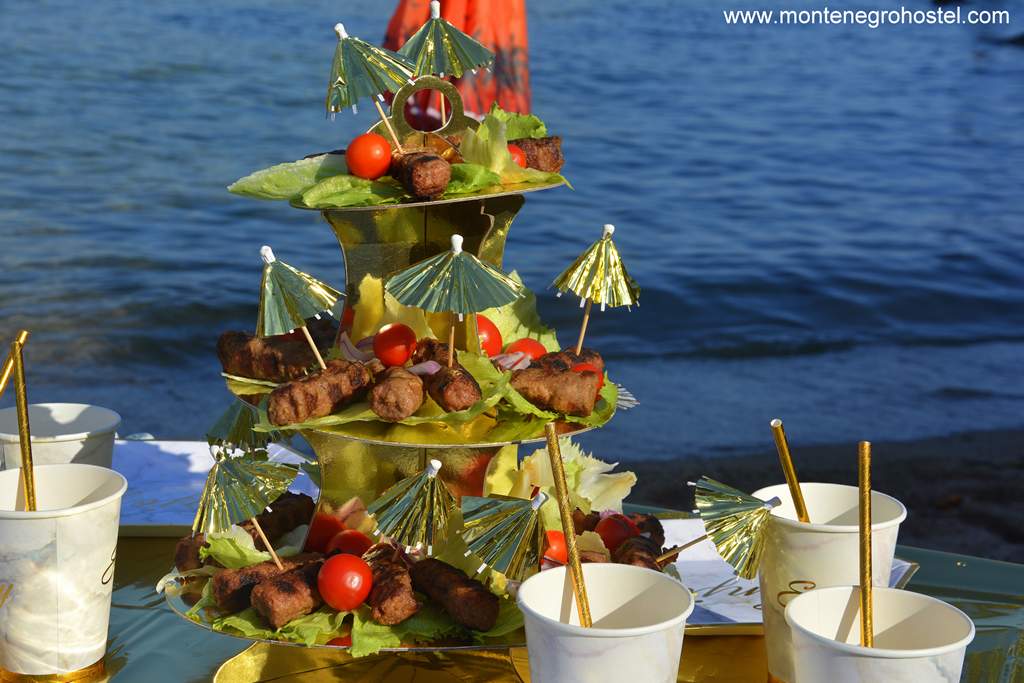
In smaller towns, the kebab grills (ćevabžinica) are more or less the only kind of places to sit down and enjoy a meal. The most popular grilled dishes are ćevapi-small minced meat rolls (usually ten of them), pljeskavica- minced pork, and veal rolls sprinkled with spices, ražnjici- slices of veal and pork grilled on skewers. All of these are eaten with large amounts of chopped onions (crni luk), but in simple places, that is all you will get with them, so you should opt for a salad on the side.
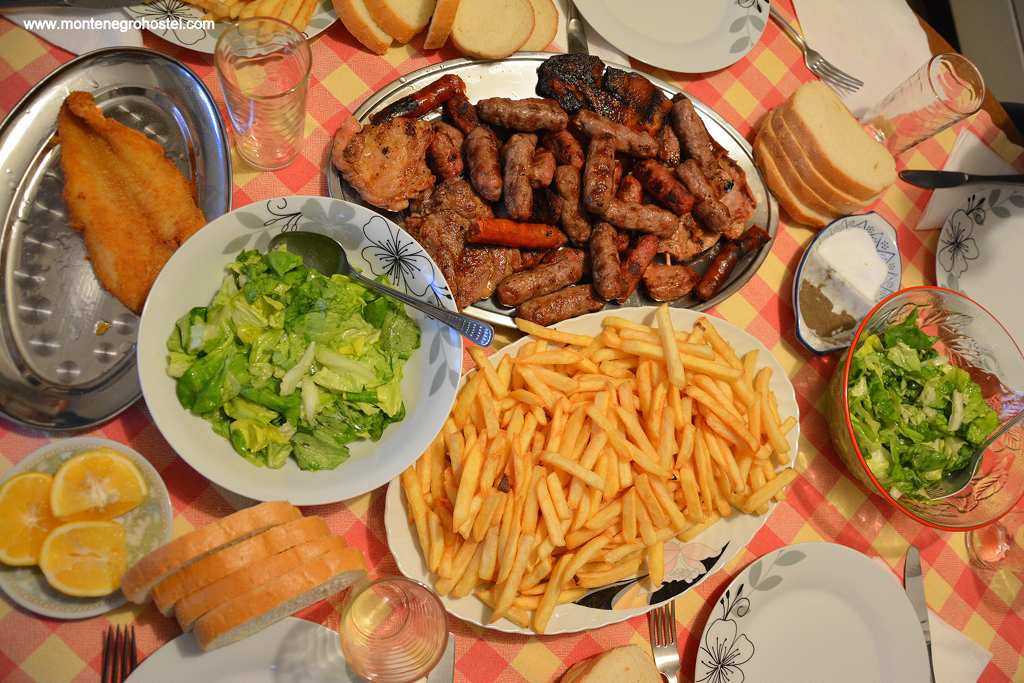
There is an enormous number of Italian restaurants in Montenegro, and on top of this usual non-national type of restaurant also bases its menu on various pizzas, pasta, or lasagna. Note that many of the original Italian recipes have been remodeled slightly to suit local tastes better, which in most cases means more meals at fat. Others are more fully out of local specialties such as kajmak, kulen (spicy sausage), pršut, etc., and offer an interesting crash course in the flavors of Montenegro. The new dishes prepared with traditional ingredients are a regular feature of all menus. Njeguški stek is veal filled with njeguški pršut ham and feta or some other cheese. Similar to it is popeci (sometimes additionally labeled podgorički) –veal stuffed with cheese and ham, fried, and breadcrumbs.
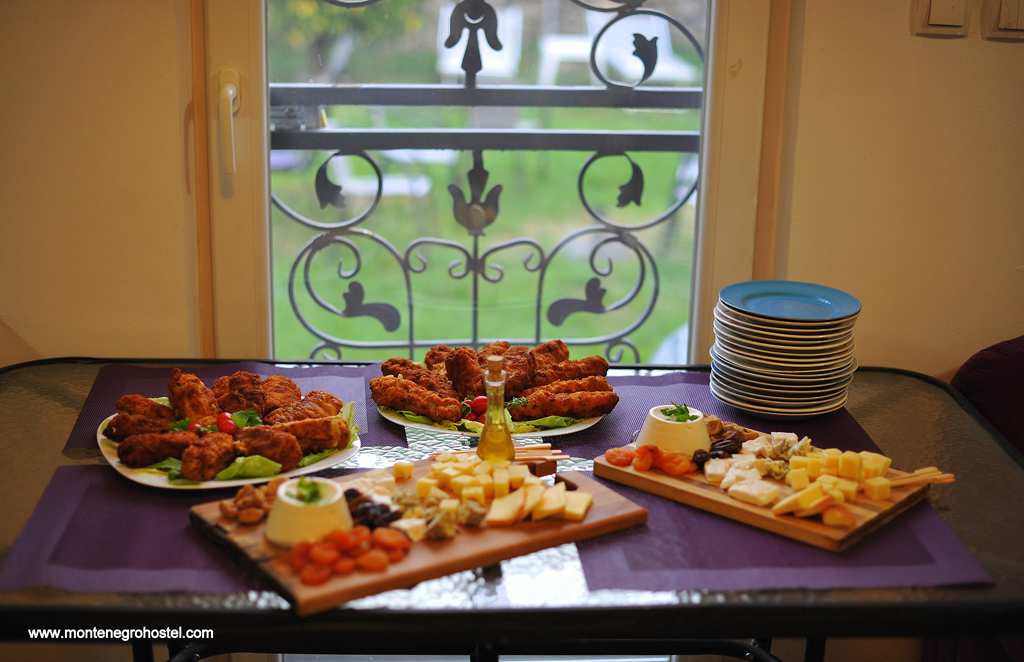
The list of desserts in most restaurants is not particularly inventive: ice cream (sladoled), fruit salads (voćni kup), pancakes (palačinke), and similar. The situation is better in pastry shops (poslastičarnica) where you will find a mix of sweets influenced by Vienna and those of oriental origins (baklava, kadaif, tufahija, urmašica …). In older establishments, you will also find boza, a refreshing drink made out of cornflour.
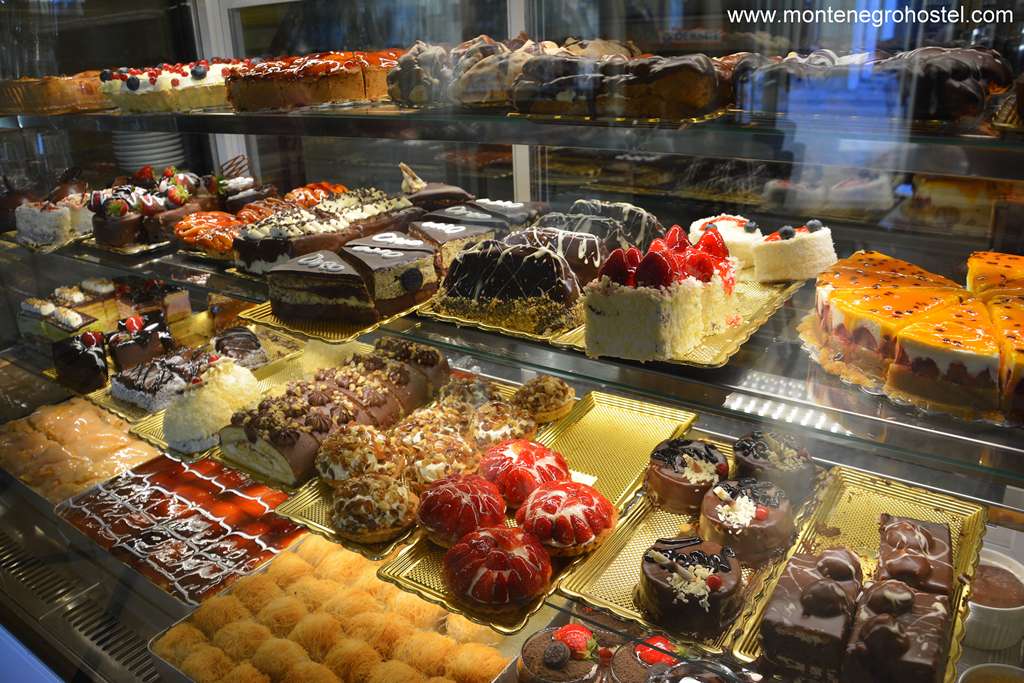
Bakeries (pekara) in Montenegro have grown into a distinctive brand, visited in the morning, at midday, or late at night, primarily for the reason of obtaining a cheap and tasty snack. Bakeries served almost exclusively a wide array of salty pastries, though some had sweet ones too. The major test of any bakery is its burek, a greasy round pie with meat, cheese, and mushrooms, or with no filling, consumed traditionally with yogurt sold on the spot. Other snacks found here are pogačice (small leafy bread), pite (classic pies in many variations as well as croissants, sandwiches, or even slices of pizza.
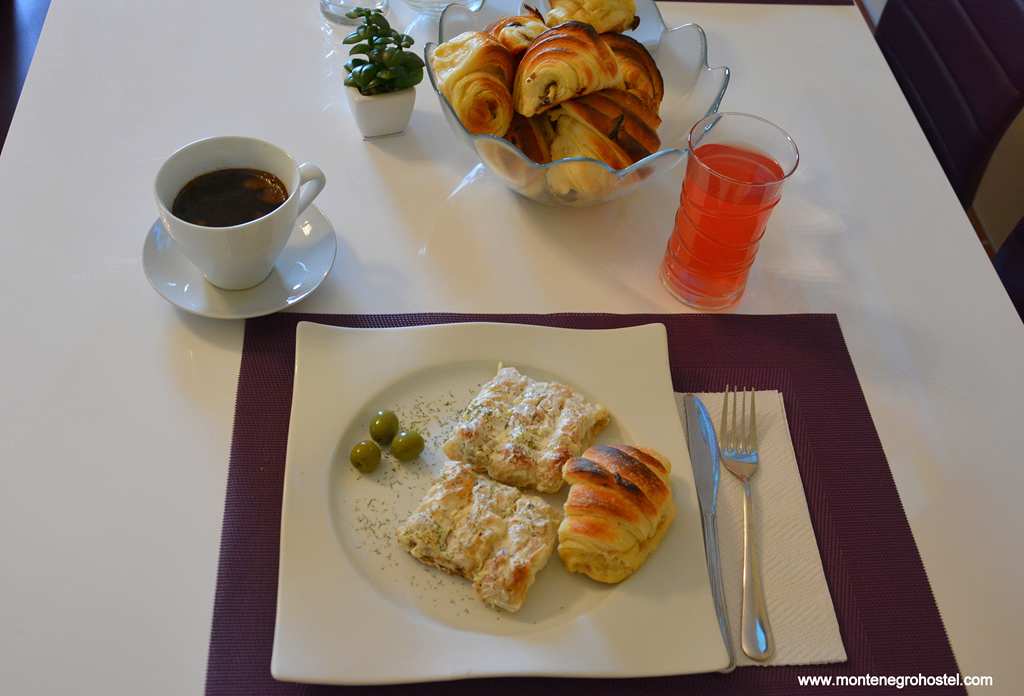
Considering all the eating habits in Montenegro, vegetarians will not have an easy time. Only the better restaurants will have a vegetarian menu. In some, you will be able to compile a meal of salads and side dishes, and in others, especially in smaller establishments and in far-flung places, trying to order a non-meat dish is going to raise eyebrows or will even be considered as next to impossible.
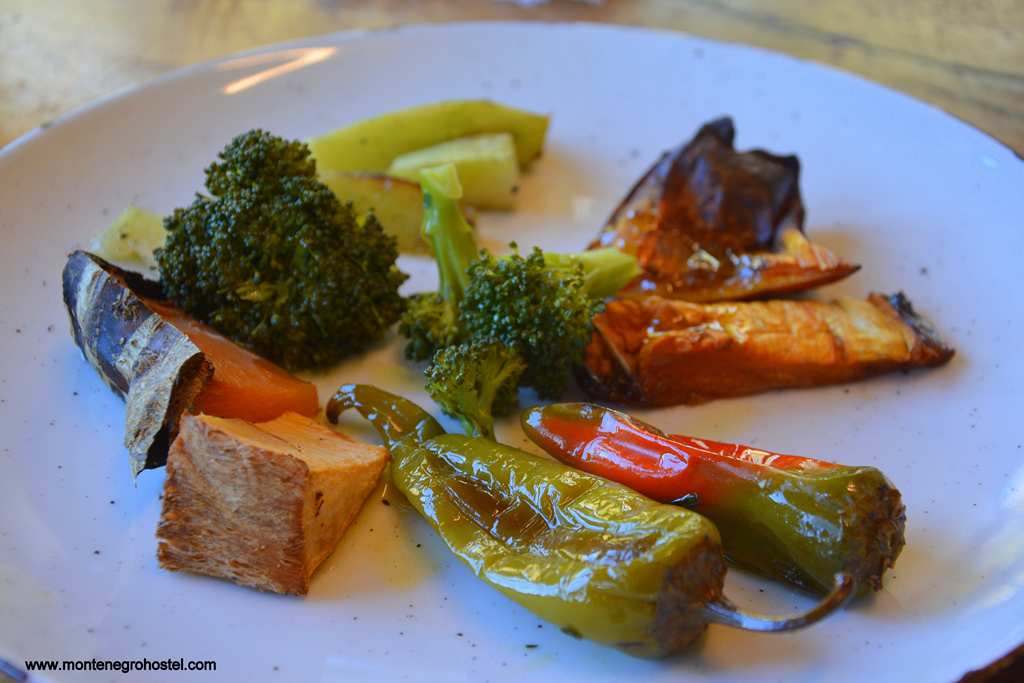
The best-known drink of the Balkans is rakija, a generic name for a potent spirit distilled from various kinds of fruit. Making one’s own rakija at home is still a matter of pride for any respectable rural household, resulting in a great variety of tastes depending on the quality and skills of the maker. In the region where the vine is cultivated, one makes lozova rakija (called simply loza by those who feel more familiar with it), prepared from grapes and similar to Italian grappa. The distinctive taste of Montenegrin lozova comes from the indigenous grapevine variety vranac, but those made of other grapes can be equally tasty. The one brand synonymous with Montenegro is “Crnogorska lozova rakija”, produced in large quantities by “Plantaže” from Podgorica and found all over the country. You can’t miss it, and, in any case, to spend your holiday in Montenegro without savoring this drink would be a great pity. Two more prestigious brands from the same producer are “Previjenac” and “Kruna”. Other rakijas made in Montenegro are šljivovica from plums, kruškovača from pears, and kajsijevača from apricots.
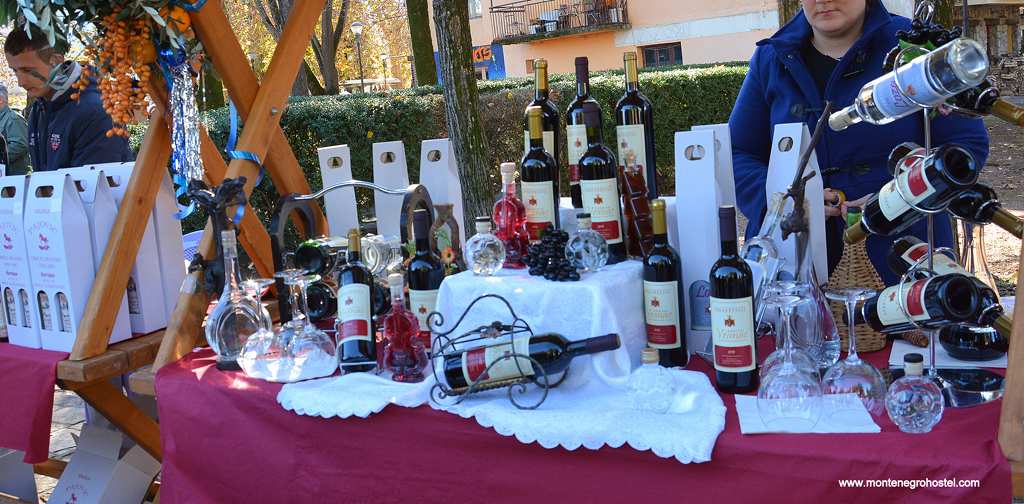
None of these are branded, but they can still be found on the menus of many restaurants. The climate is favorable for growing vineyards found only on the coastland and around Lake Skadarsko. The most popular region that kept its production is Crmnica, around the town of Virpazar on Skadarsko Lake, though its output is also only a fraction of what it used to be. The two domestic sorts are native to the area, dominant vranac and kratošija. Vranac (“the black one”) in particular has grown to be associated with Montenegro.
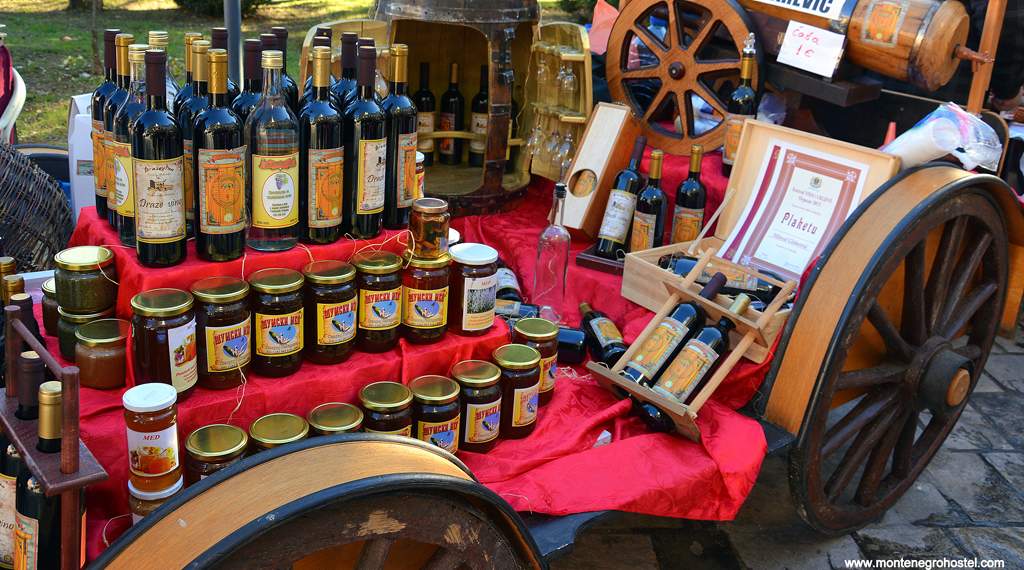
It is a wine of dark ruby color, with a robust and full-bodied aroma. This is also the wine offered in many restaurants in this region under the name domaće (domestic). The main producer of wine in Montenegro is the state-owned “Plantaže” company with its huge vineyards in Ćemovsko polje (Ćemovsko field) south of Podgorica. Here, they produce an array of red wines such as the “Crnogorski vranac”, “Crnogorski cabernet”, and “Crnogorski merlot”.
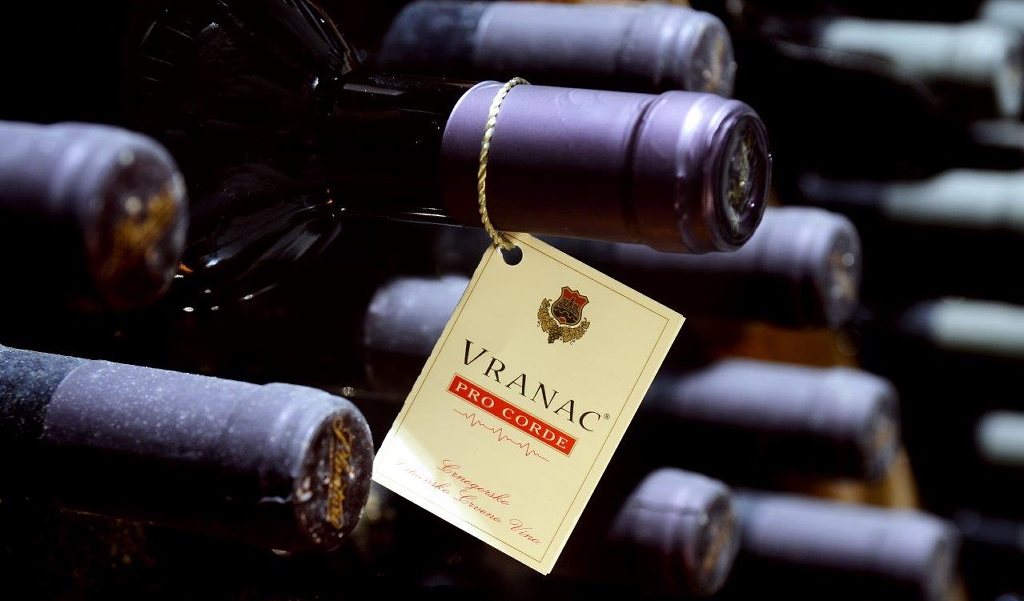
White wines are represented by the native sort of this warm, lowland area, “Crnogorski krstač”, which is grown nowhere else in the world, as well as “Crnogorski Chardonnay”, “Crnogorski Sauvignon”, and “Podgoričko bijelo” (white wine). The 0.7 bottles are filled with premium wine, while the one-liter bottle is filled with quality wine. The large production of these fine wines fully covers the needs of Montenegro, and you will find them in all shops and restaurants. “Trebjesa” in the town of Nikšić is the only brewery in Montenegro, but its “Nikšićko pivo” beer is of such quality that one tends to look no further. Apart from this palatable lager, it also produces an excellent tamno pivo (dark beer) variety as well as premium “Nik Gold” and light “Nik Cool”.
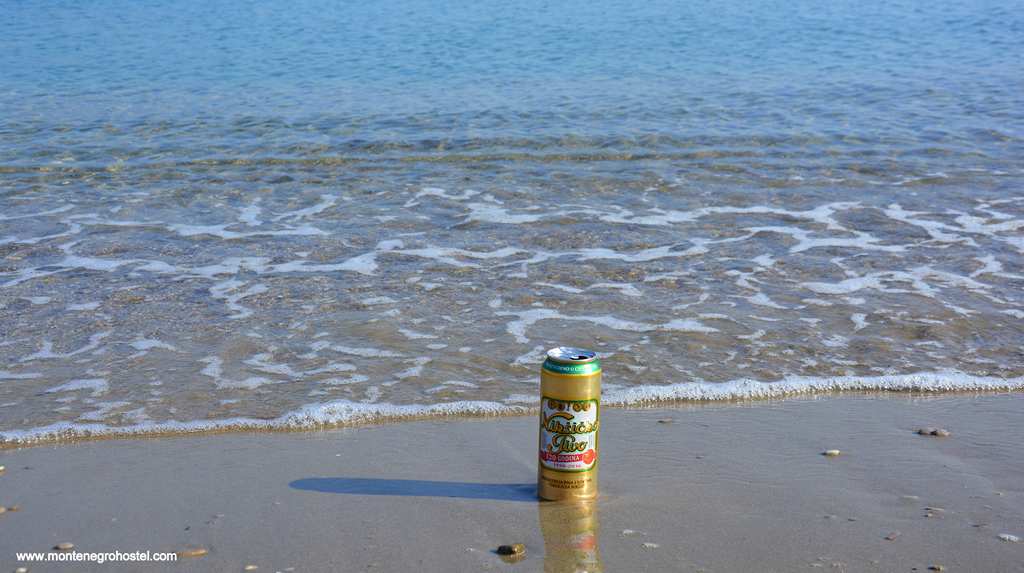
The origins of medovina (mead) go back to the early Middle Ages, when this alcoholic beverage of fermented honey was made and consumed by the old Slavs, who were celebrated as the most skillful beekeepers in Europe. The high pastures with their many aromatic flowers are still ideal for bees, and the recipe for mead has not been forgotten. This sweet but refreshing drink is found in many national restaurants, but you can also savor it from many individual producers. If you purchase a bottle of two of medovina, pay attention because, unless kept refrigerated, the fermenting process will continue, and it will become fizzy and eventually undrinkable.
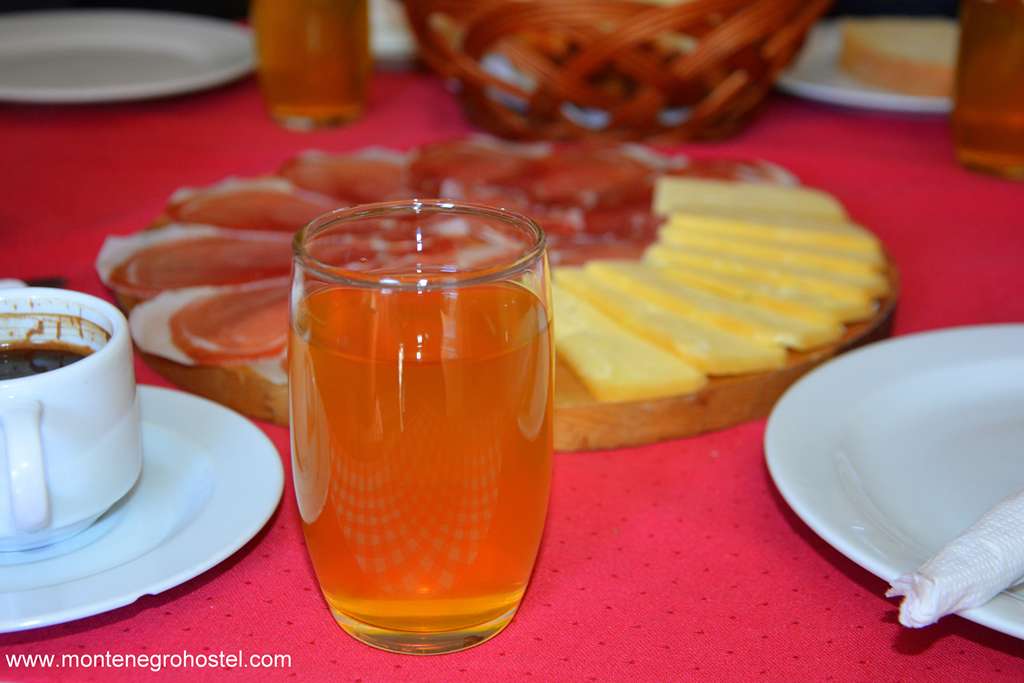
A drink inseparable from a friendly chat in a street café or at home is coffee (kafa), which is, as a result, drunk in large quantities all over Montenegro. Coffee is also the drink you will be offered upon entering someone’s house, and with which each meal is usually rounded off. Until not long ago, when ordering “a coffee” you would without any doubt be served a strong, black coffee, called Tuska (Turkish) or just crna (black), made out of ground coffee beans, added boiling water in small copper pots called džezva.
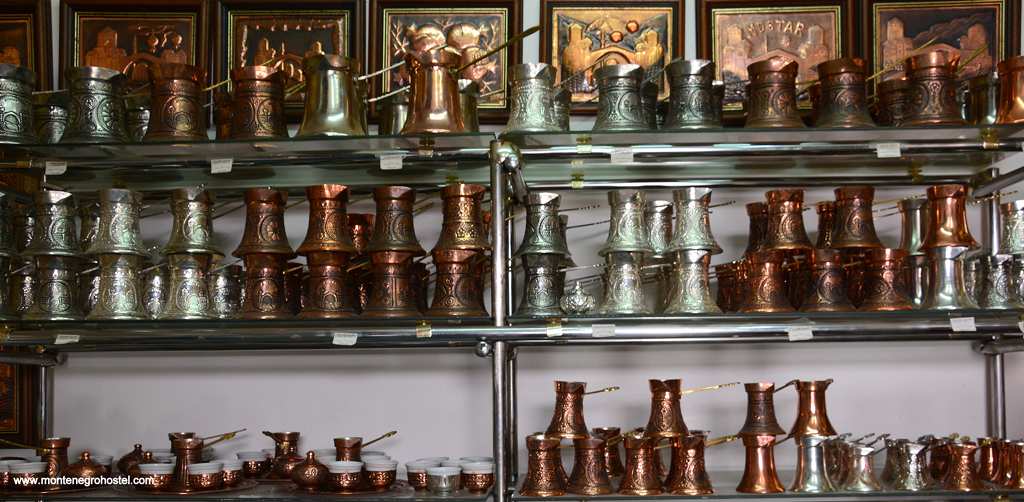
Upon ordering, it is customary to specify the quantity of sugar you want slađa for sweet, srednja for medium, or gorča without any sugar; otherwise, you will get sugar to sweeten it yourself. In cafes caring for old-time customers, the coffee will be accompanied by a glass of cold water, and in some places even with a piece of Turkish delight. Nowadays, it has become more fashionable to drink espresso, and you will find that many trendy cafes and restaurants won’t go to the trouble of preparing Turkish coffee. Nes (kafa) is a generic name for all types of instant coffees, regardless of the brand; you can order it hot (topli) or cold (hladni).
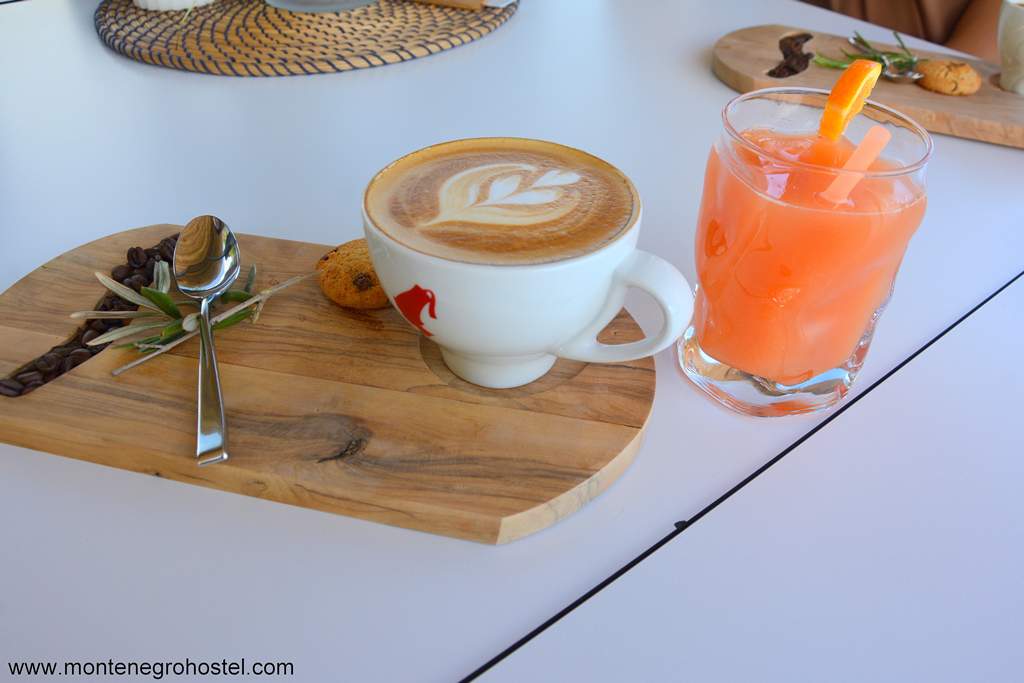
Montenegrins are very fond of mineral water (kisjela voda), and there are several domestic brands around, like “Rada” from Bijelo Polje. The mineral water will often be served with a glass of rakija or coffee. Asking for water (voda) will usually get you to tap water, and to order bottled water, ask for flaširana voda.
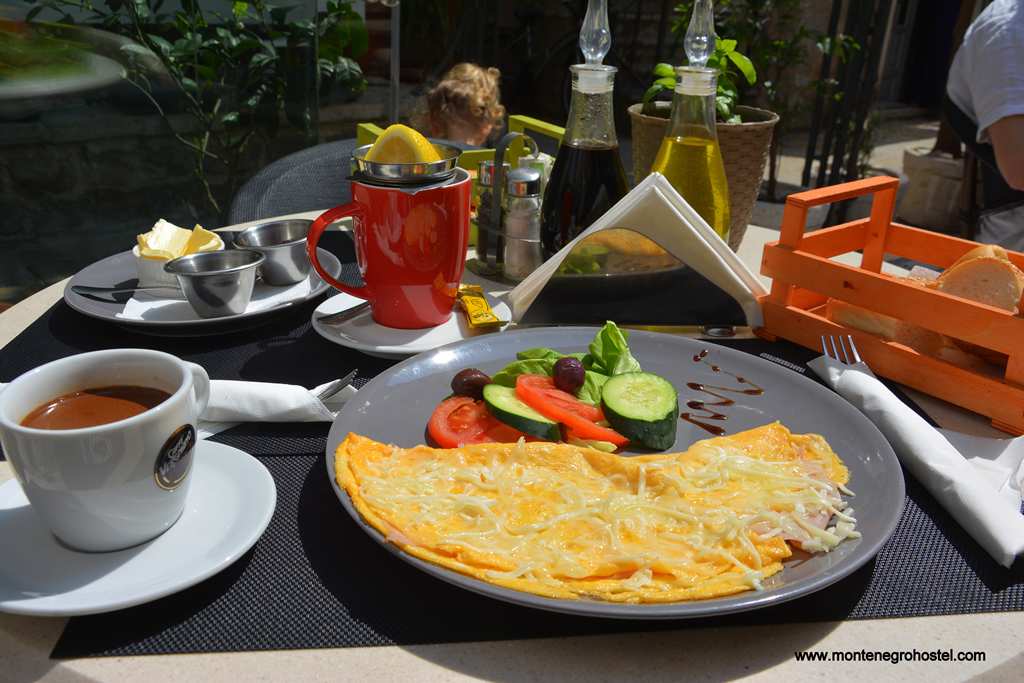
Montenegro Hostel Team
SEASIDE CUISINE
SEASIDE CUISINE IN MONTENEGRO
In a sun and sea ambiance, fish, wine, and olive oil make up the “Holy Trinity” of Mediterranean cuisine, which is the base of Montenegrin seaside cuisine. That thousand-year-old Mediterranean nutritional philosophy gave the Montenegrin area authentic products: domestic wines, barska žutica (faraway known autochthon olive sort), as well as a wealth of European sea bass, meager and leer fish from the sea near the delta of the river Bojana.
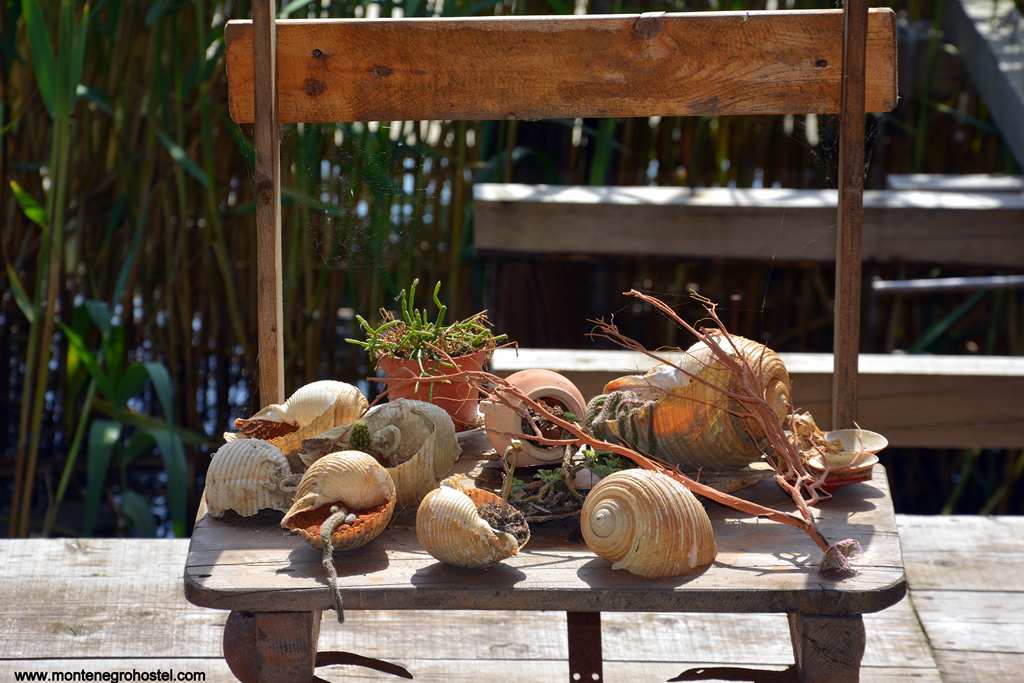
The main character of a seaside kitchen is making use of plenty of piquant grass (the supreme position belonging to parsley and rosemary), vegetables, especially potatoes, kapula (onion), and garlic, and different sorts of green vegetables: spinach, Swiss chard, and žućenica (a sort of vegetable). There are also pastries, pasta such as makaruli (a type of pasta), doughnuts, and ruštula (a type of roll).
FISH SPECIALITIES
Even here, it is a well-known proverb that fish, during its journey from sea to table, has to swim three times: in the sea, then in olive oil, and finally in wine. This rule is justified in practice and is especially practical when preparing the bluefish. Bluefish and red wine are a staples of the Mediterranean. Even if the white bite is more expensive, bluefish has more nutritional value. This magic formula is based on omega-three fatty acids that are found in mackerel, bonito, pilchard, tuna, and swordfish, which are the cure for our veins. So, bluefish together with olive oil elixir and antioxidants from wine make a new trinity that none can refuse.
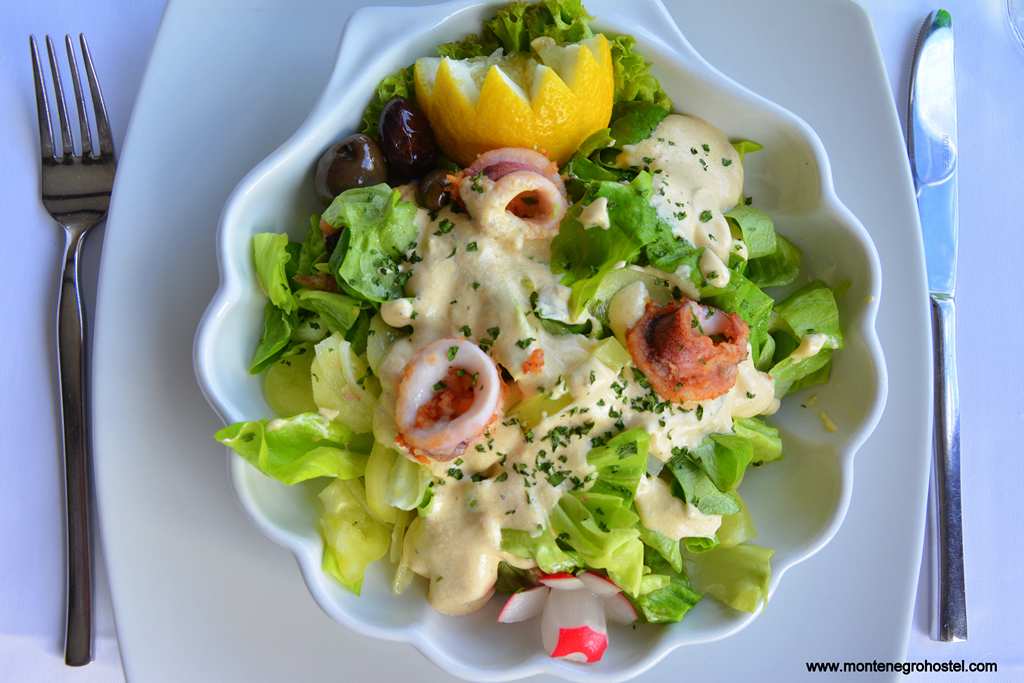
Bluefish has a strong taste, so it is better for dinner with red wine. Whitefish bites, roasted with vegetables or just cooked, are a better meal during the daylight, especially in the summertime. With whitefish, one has to drink chilled white wine. The separation of blue and white fish is made for culinary purposes. The key difference is in the dryness of meat and the quantity of some specific fatty acids. In Montenegrin seaside cities, you can always find fresh gilthead sea bream, barb, common sea bream, as well as mullet, red mullet, red scorpionfish, and frog whitefish bites. During the wintertime, the fisherman is luckier with piper crowned and hake. Sea eel, moray, and ray are in lesser demand, but without them, especially without sea eel or conger, as they call it on the seaside, one cannot imagine a good fish stew.
SALTED EUROPEAN SEA BASS
One of the most precious sea fish is the European sea bass. Along the Montenegrin coast, it is known as lubin in Boka and levrek on the river Bojana delta. It is appropriate for all kinds of meal preparation, and it’s also a good component for the preparation of cooked fish. But, there is one specific kind of preparation you need for a European sea bass of one, possibly two, or even three kilograms. You have to open a fish with a shortcut and clean it without washing it with a rag soaked in seawater to preserve its inner liquids. Then you have to put the fish in pepper and fill it with parsley and lemon. After that, you put the fish in a dish full of sea salt. You have to have more salt, enough to cover the fish from every side. You can also use foil.
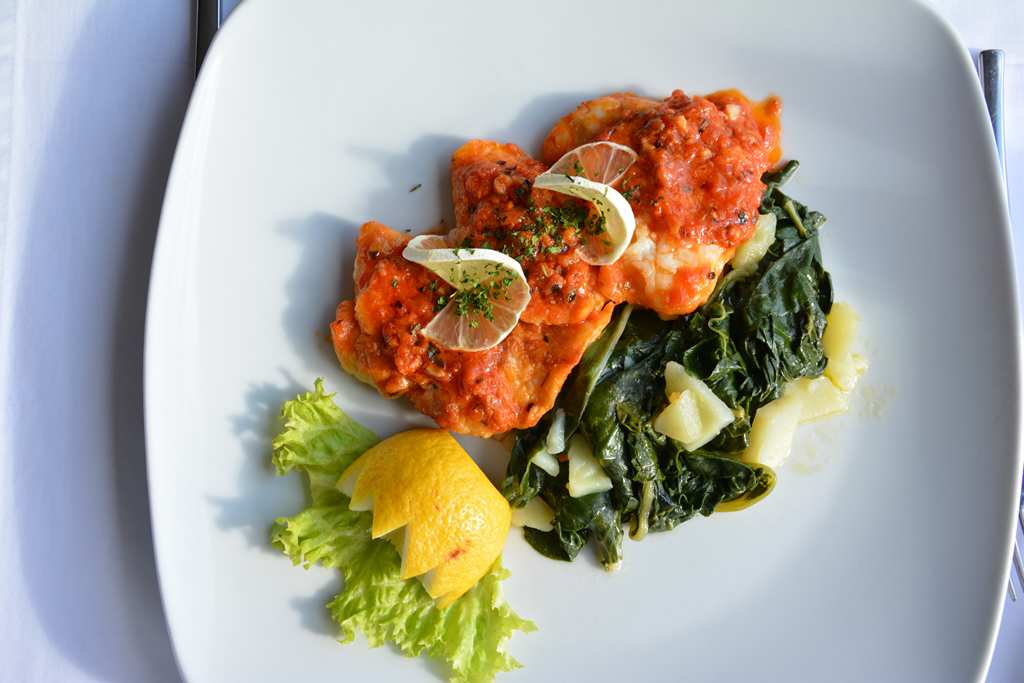
The fish has to be roasted at 200 degrees Celsius. Roasting time depends on fish size. When you take it out, the solidified salt shape has to be broken with a knife, and the fish is ready to be eaten. This taste is unbelievable. All liquids stay within the fish. If you use domestic sea salt for this kind of preparation, you can say that you prepared fish in a “sea extract”. Fish take from the salt enough minerals, which surround it in the fish’s natural ambient, a sea. And that is why it is so important for you to use sea salt, not stone salt. European sea bass could also be prepared with vegetables, under the foil, or on the barbecue, but it is generally better for bluefish, and it is better to cook whitefish bites.
COOKED MIXED SEA FISH
European sea bass is one of the most important ingredients for cooking mixed types of whitefish bites. One of the best ways of preparing cooked fish is with vegetables bass, gilthead sea bream, barb, mullet, and white seabream, as many types as possible, should be mixed with a lot of vegetables. When you prepare so many fish sorts, two kilos is enough for four people, it is a pity to throw out the base in which we cooked those fish. Instead, use it to prepare the great fish soup that indeed is a miracle cure.
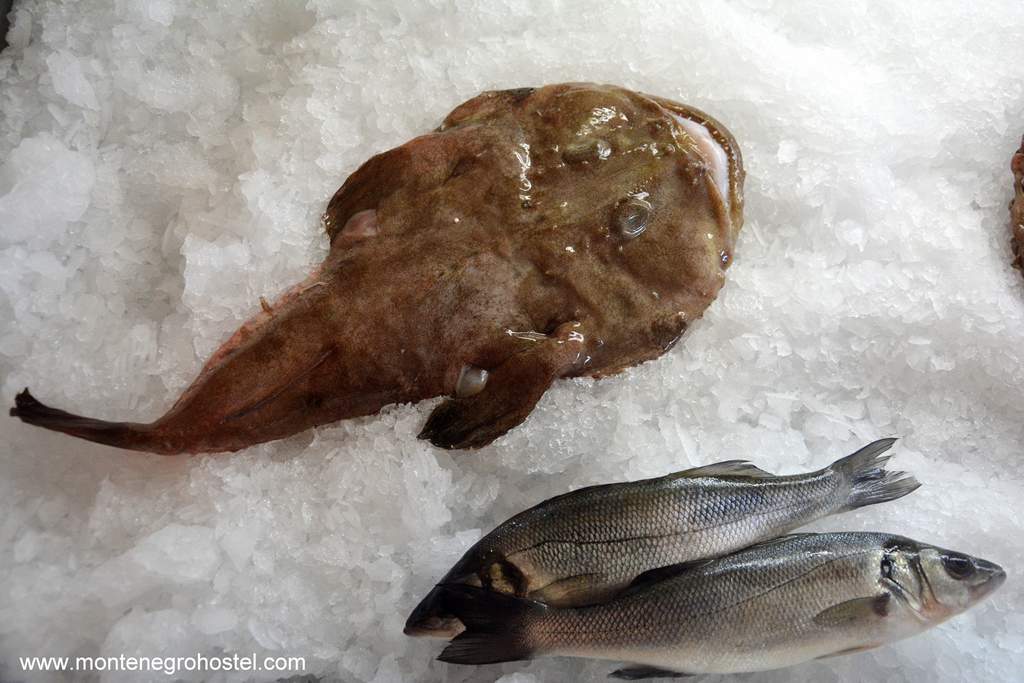
Preparation starts with cleaning the fish, washing it in salt water, putting it in a steamer, and adding onion, garlic clove, pepper, laurel, celery, basil, and 100 ml of olive oil per kilogram of fish. Pour with cold water, add a spoonful of vinegar, and a little bit of sea salt. Fish is ready when it is easy to separate apart meat from the bones. Then you just have to take the fish out and put it on a plate, pouring the base. We filter the rest and add small pasta or even better rice, so here they are, warm “sea soup”.
FISH STEW-MEDITERRANEAN TASTE
Besides all possible meals, nothing is more specific and delicious than fish stew-fish with vegetables and spices, half roasted and then cooked with tomato juice. In this meal, you can use any kind of fish, but the best solution is redfish, and then monkfish, mullet, white sea bream, fork beard, dusky, conger, etc. The same rule as to steaming fish; as many sorts of fish as possible make the fish stew better. No other meal is more characteristic of the Mediterranean than this one. Fish, onion and garlic, laurel, tomatoes, parsley, olive oil, and capers, mixed and served with polenta. Before you start to eat this warm, a bit hot, and peppery mix of sea ingredients, it is good to drink some brandy as an aperitif. During the meal, red wine is excellent. In preparation, you have to put every spice and vegetable in its place.
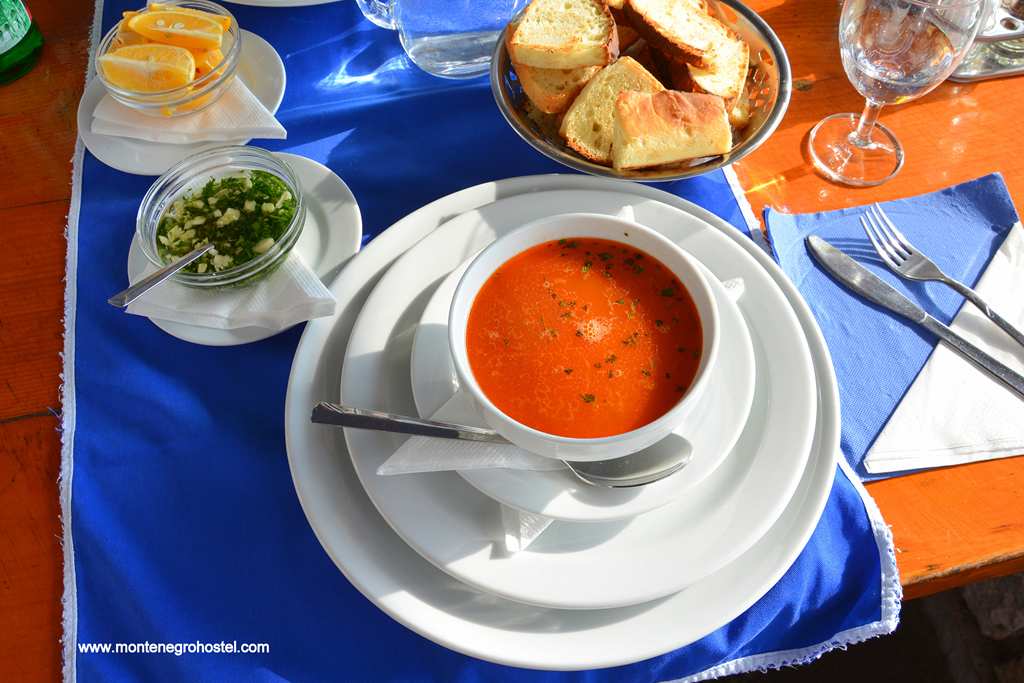
First, put the onion in olive oil with pepper. And wait until it becomes reddish. Then you can add garlic, laurel, fish, tomato juice, a tomato, white wine, and water. Of course, you can try something else, but the best taste is produced when you put onions first. The meal is first boiled and then slowly cooked at a lower temperature without mixing. Red scorpionfish prepared in a fish stew or just in the steamer is recognizable not just as a tasty fish but as a spice for every other fish. With every pouring of fish stew into your dish, you taste a special aroma. With every new pouring, you are closer to the source that gives color, fullness, and character to the whole meal. When you try a bit of redfish from that pile of different kinds of fish, you find the secret of every fish stew.
OCTOPUS ROASTED WITH POTATOES
A three-kilogram octopus caught just a day ago is cleaned and placed on ice to lie there for at least a day. With this much, the fishermen say, it is a pity to prepare just a salad of it. It is because you need to cook the octopus for hours, making it half-smaller, to prepare a salad. When roasted, octopus keeps most of its size because the whole process lasts much shorter. But let’s go back to our octopus on the ice. After unfreezing, we have to beat it with a wooden hammer.
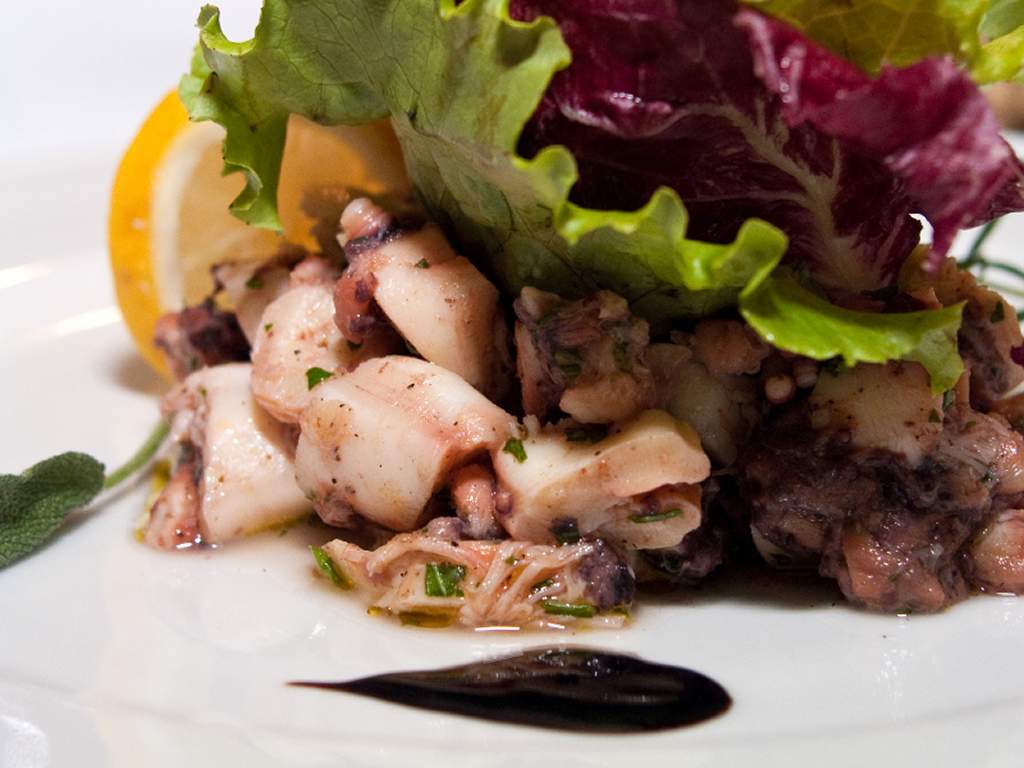
The ice is important to soften the octopus’s firm meat, and the hammer is for the same reason. In general, after beating, we put it into a huge bowl and cover it with olive oil, fresh rosemary, or dried rosemary, it with a little bit of salt and pepper. Around it, we put larger bits of potato and altogether put it into the oven, better yet under the smoldering coals (sač), and wait until it becomes red. The meal is ready at the same time as the potatoes because octopus cooking time is shorter than when we cook it for a salad.
MUSSELS ON BUZARA (WINE, OLIVE OIL, BREAD CRUMBS, SPICES)
Mussels have their place in Montenegrin cuisine. We recognize these as something untouchable, hidden, so mussels, in all Mediterranean countries, and so Montenegro has a special place in the cuisine hierarchy. Not only because of its believed aphrodisiac forces, but also for its taste when prepared in wine and bread crumbs with garlic and parsley. In olive oil, we put a few garlic cloves, parsley, pepper, laurel, and a kilo of washed mussels. We cook it in a steamer until the shells open.
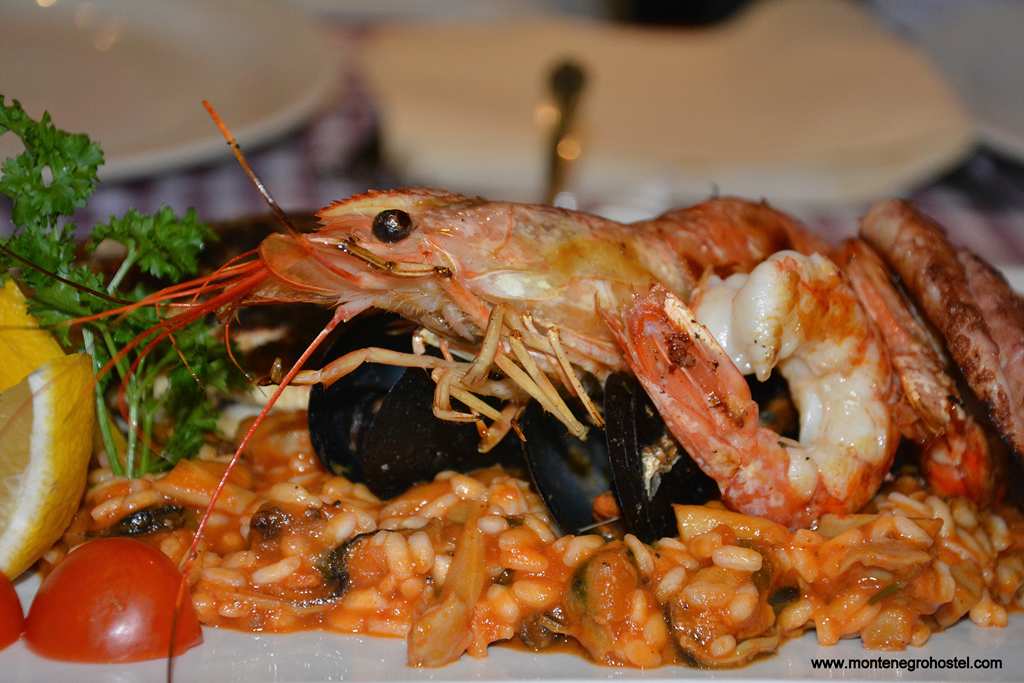
Then we pour a bit of good white wine, basil, and bread crumbs. Another way of preparing is to braise all the ingredients previously, and after adding wine, add mussels to take out their liquids and mix with buzara.
Montenegro Hostel Team
LAKESHORE CUISINE
LAKESHORE CUISINE IN MONTENEGRO
When you can smell smoked dried bleaks or spiced cabbage with kaštradina (smoked dried mutton), or you can see eel or carp, reddish within a terrain dish with rice, it is a sign that you will cross a mountain wall that separates the seaside part of Montenegro from its central parts.
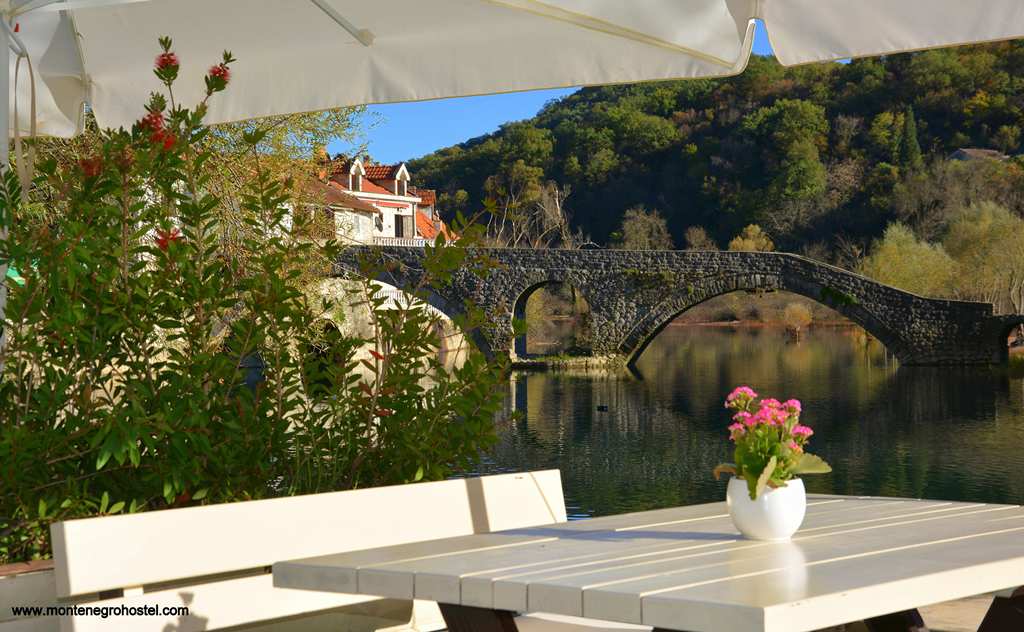
Thanks to the river Bojana, which is a link between the lake and the sea from one side, and Boka Kotorska (Bay of Kotor), which is widespread from the other end of the coast to the inner part of Montenegro, and brings with it a Mediterranean spirit.
FRESH AND SMOKED FISH
Under the morning sunlight, a small boat is passing through water floras to nets and cylinders in which fishermen catch two regionally famous and precious sorts of fish: European carp, Skadarsko Lake carp, and eel. Of course, besides those two sorts, bleak is also important, an endemic sort and well-renowned delicacy in this cuisine, especially if it is smoked and then prepared on the grill or as a salad.
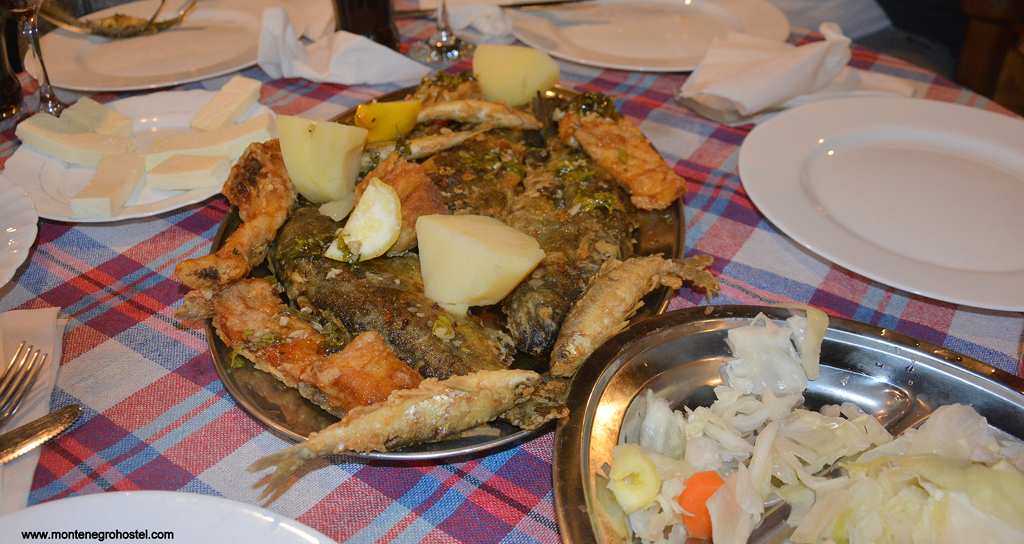
Carp is the biggest of that kind of lake fish. It can surpass 20 kilograms, but for preparing the meals, carp should be fresh and about three or four kilograms. When you clean such a big carp and parboil it, it is a proper measure for a pan, or on the grill, and it is enough for four people. Bigger carp, usually, are smoked and made to become well-renowned, famous delicacies. Smoked carp, cooked or marinated, becomes a fish delicacy about which stories are told and for which it is worth coming back to Skadarsko Lake, again and again.
KRAP U TAVU (CARP IN PAN)
There is a more traditional way of preparing the carp. But a little bit exotic is “krap u tavu”, a meal made of fish, vegetables, and several sorts of fruits like apples, quince, and dried plums. A combination of vegetables and fruits neutralizes the fish’s characteristic taste, which is stronger in summertime. With such a mix, the meal becomes softer, camouflaged with additives, but balanced so you still know that it is fish. For a pan, a carp of three kilograms is enough. For this meal, you need a lot of onions, about two-thirds of a carp’s weight, or two kilograms is a proper measure. You have to put a portion of the carp to fry in oil. Before, if you can add a half-fried in a pan or, like in this case, fry in a griddle until you prepare a sauce of vegetables and fruits.
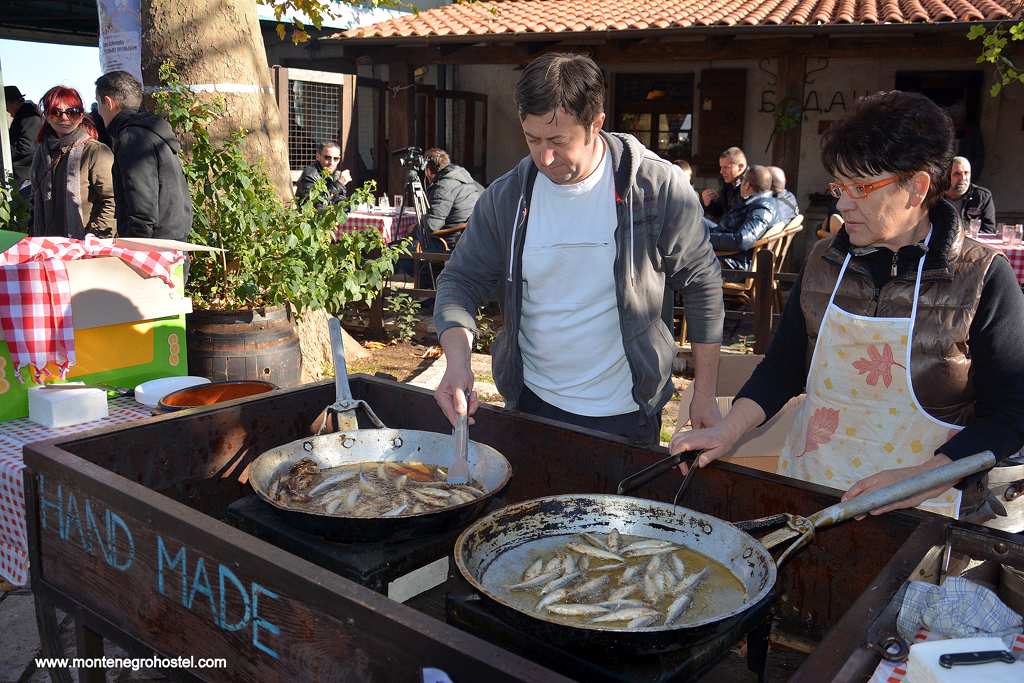
The first step is to braise pieces of onions with oil, and after the onion turns golden brown, you have to add three spoons of flour, one spoon of red-hot chili pepper, and five spoons of tomato juice. When it combines, you can add water and a quarter of dried plums that were dried in hot water. Then you can add the rest of the fruits- sliced sour apple, quince, a spoonful of sugar, and end with a few spoons of wine vinegar, and salt to taste. With such a mix, we poured carp that were baked and altogether put to roast for more than half an hour. Of course, this meal is much tastier if you put it in a crepulja (ceramic vessel with lid), and put it under the smoldering coal (sač).
EEL WITH RICE
Fat and caloric eel is usually prepared on a barbecue, zeal, or in crepulja (ceramic vessel with lid), and put under the smoldering coal (sač). It gives it a special taste when prepared with rice. Rice absorbs the surplus of fish fat, and also absorbs fish liquids, so eel with rice, onion, and spices has a softer taste. If you add dried plums, it gives the meal a "special effect". After a few bites of fish and rice, dried roasted plums come as an intermezzo of strong, intense taste. And that is how you can make a pause for a wine to pair with a bite of fatty fish meat. This very tasty and esteemed meal is more suitable for wintertime, but, for the real gourmand, there is the prime time whenever.
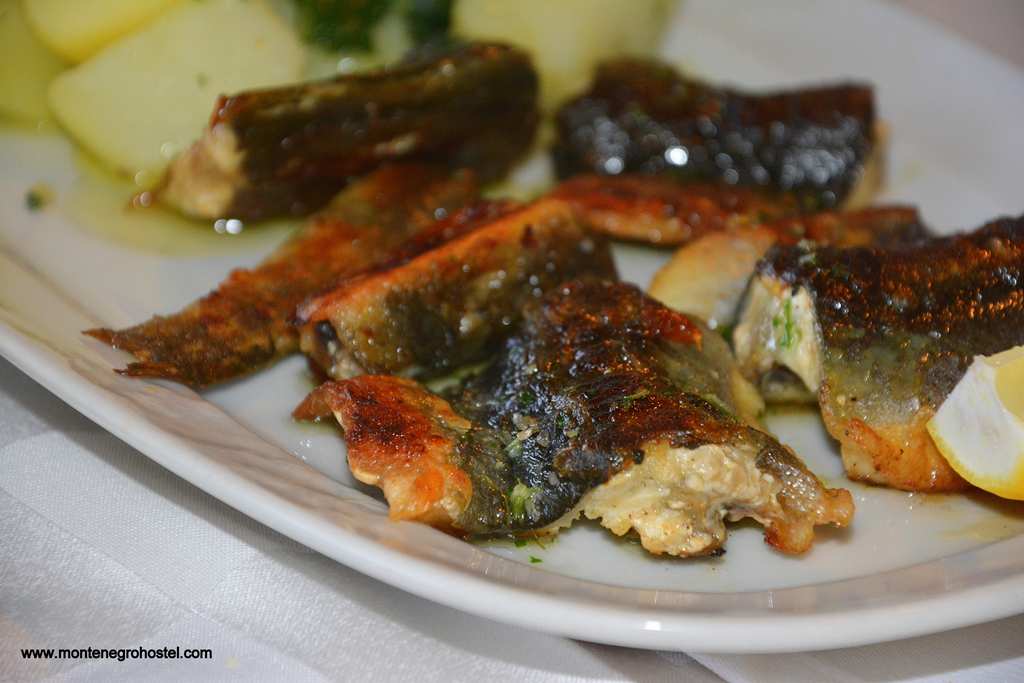
As usual, when rice is a component of some fish, first you have to roast a bit of onion in oil. Approximately, for every kilo of eel, you need three or four onions. Not too much cut, it will be roasted in oil just to become squashy. Already washed rice, we put it in a pan and mix it with onion. Such as a pile we arrange around a tray or crepulja, and pour it with water, but carefully so that the pile doesn’t become thicker and more liquid. Above the rice, we put parts of roasted eel with salt and pepper. The whole composition of rice and fish is poured at the end with olive oil and put to roast. It is served warm with green salad or tomatoes with olive oil.
SMOKED BLEAK SALAD
In Montenegro's history, bleak was a strategic export product. Strings of bleaks have often been used as a barter on a market. Bleak scales were used as the emulsion in artificial pearl production in Rijeka Crnojevića. Small but marvelous fish of silver color, which mostly looks like a sea fish rather than a lake fish. In cuisine, the most esteemed were winter-smoked bleaks that you can find on Montenegrin markets during those cold days. Because smoked bleak is very salty, before preparation, you have to wash it in water. After two washes, it is ready for boiling in fresh hot water to become soft. After that, we put it in a dish and poured it with olive oil, vinegar, garlic, and parsley, which were already mixed and prepared for it.
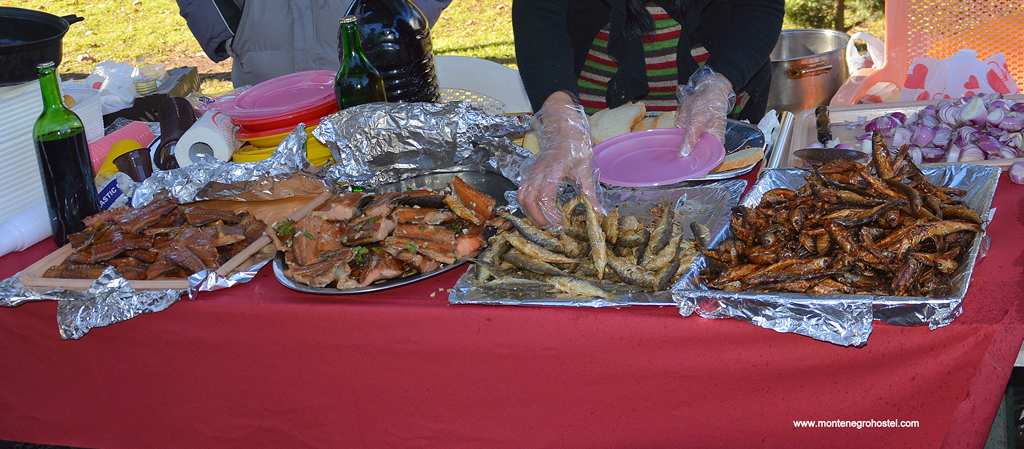
Another way of preparing smoked bleak is a short fry in oil. You have to fry both sides of the bleak for a few minutes until they produce specific aromas and become reddish. Then the meal is ready. It could be an entrée or a main meal with some salads. With onion, or a better solution with potato and onion salad, goat cheese, and olives, fried smoked bleak is an excellent base for a good glass of wine.
PODGORICA TROUT PREPARATION
Besides carp sorts, several sorts of trout go to the nearby affluent Morača River, from Morača in the Cijevna River, and the river Zeta. It is an endemic sort like strun (Salmo dentex) whose behavior is similar to salmon. It migrates between the Morača River and Lake Skadarsko. Besides strun, the river is home to the brook bank trout (Salmo marmoratus). California trout were introduced. All those sorts can be prepared in Podgorica's way of preparing, in combination with yogurt and garlic.
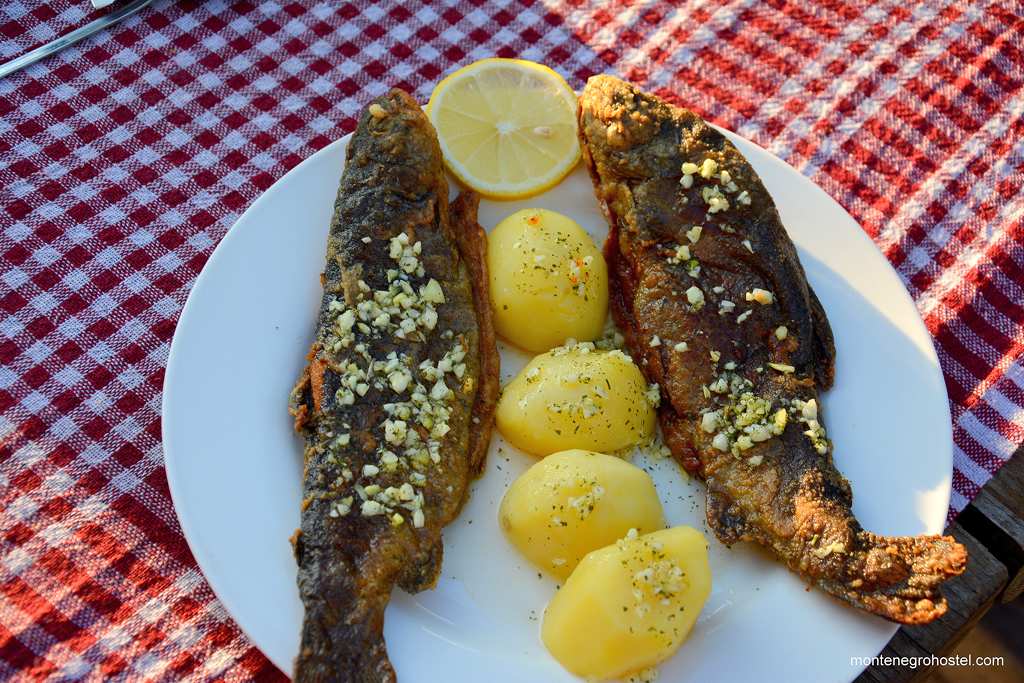
The difference lies only in its weight; if they are small, you can fry them integrally. These delicacies are made in two phases. You have to fry the first part of the prepared fish and then put it into a deep plate, covered with garlic, salt, yogurt, then fish, garlic, and yogurt. For a kilo or a kilo and a half of fish, you need approximately two liters of milk, one garlic clove, and parsley as decoration at the end. You can make a sauce made of milk, salt, and pressed garlic when you mix it with milk, and then pour the fish on a plate. This solution is more appropriate if you have to pour larger parts of fried fish.
RAŠTAN WITH SMOKED MEAT
The central part of Montenegro, especially the area around Cetinje and Skadar Lake, is well known for raštan prepared with smoked meat and with some mountain spices. Raštan (a sort of cabbage) as a meal is most frequent during wintertime, at the same time as smoked sausages, pork legs, and other caloric bites. It is also known as lake cabbage. Raštan is tastier if you prepare a larger meal. That is why in old Montenegro, from preparing raštan they used a big steamer pot to put it in a fireplace or cooking stove. Special adds that raštan and smoked meat make it tastier is morač, a kind of spice that has its characteristic, exotic, and strong aroma.
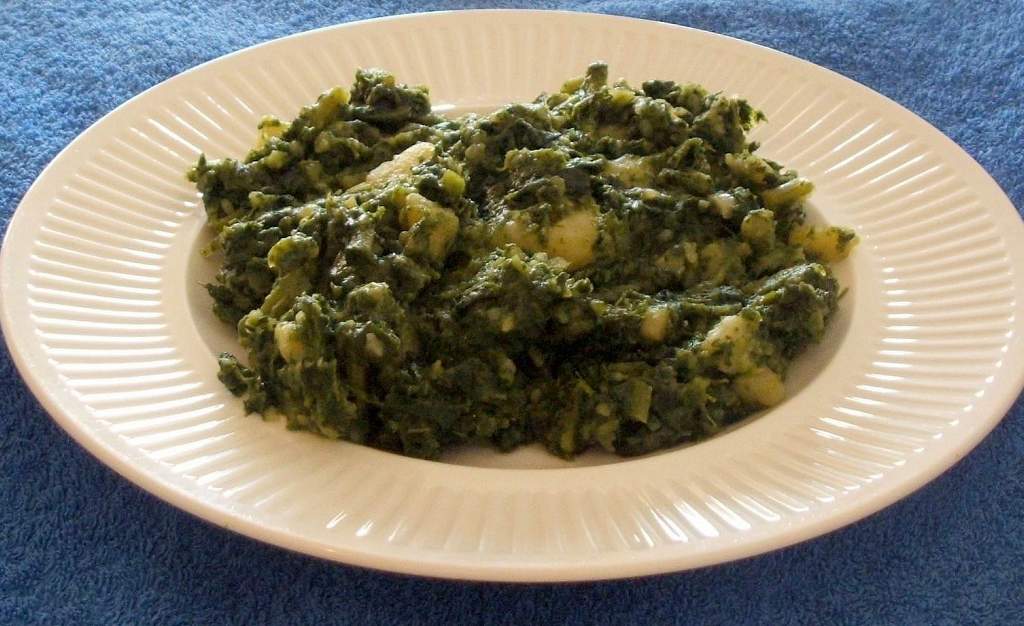
You have to be careful with it, as putting more it will be the dominant aroma of the meal. True cooks knew the right measure for cabbage and meat and spice, for which you need a long cooking experience. When you cook raštan, you have to wash its leaves previously and cut its stalks. We all those leaves we put together and cut on a centimeter or two long lines, then put in into boiled water and cook. In another steamer, we have to cook sausage, pork legs, or some other part of smoked meat (smoked bacon is excellent for it too). When meat and raštan are half-cooked, we add potatoes. This meal is ready to be served when the potatoes are cooked enough.
JAPRACI
Japraci is made of new leaves of raštan or vine with cow meat, bacon, or smoked meat and rice. We left the leaves to boil for a few minutes in saltwater with two spoons of vinegar. Meat for filing could be treated in tiny cuts. The best solution is baby beef in combination with bacon or tiny cut kaštradina. For kilo raštan, we have to put a half-kilogram of meat, 100 grams of rice, spices, a quarter of smoked meat, and three medium-sized onions. First, we fry the cut onion until it becomes soft, then we add meat and rice and let it be fried. Then we can add salt, pepper, and dried parsley. With this pile, we fill leaves of raštan and all of it rolls so that we can put it on a bigger spoon.
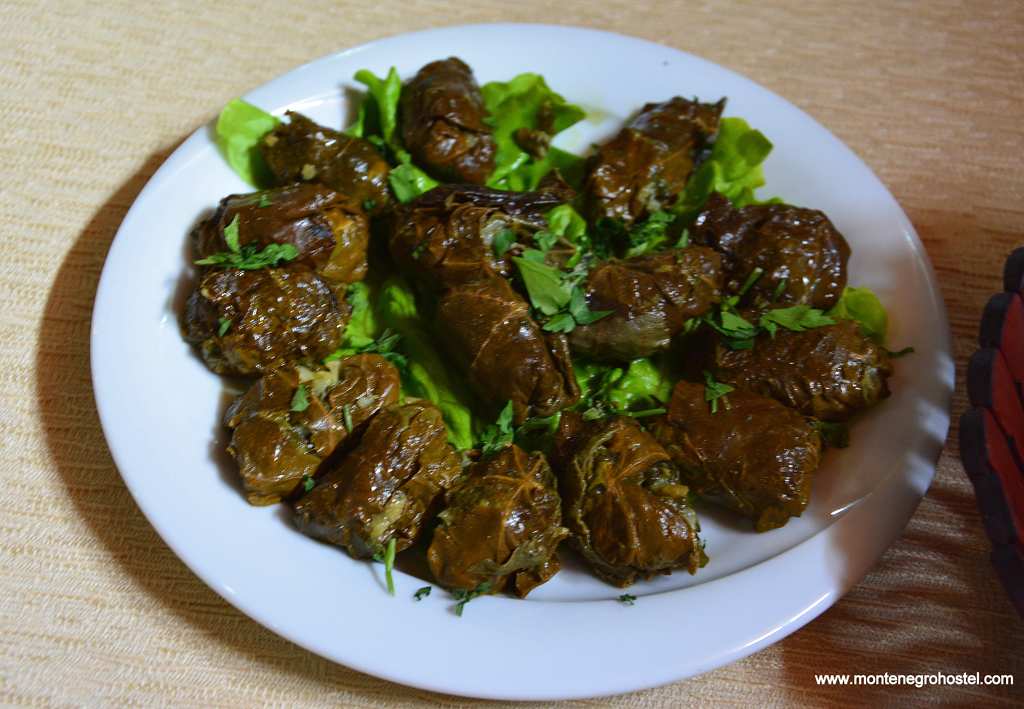
Rolled japraci, put it in the steamer, poured water, and boiled it. After boiling, leave it in a steamer for an hour and a half or two, but not at a high temperature. Smoked meat that we mentioned above could be put within “roll” leaves or just put inside the steamer. When it is ready, we can add browned flour and red pepper. This specific meal of softly acidic taste is good in combination with sour cream or thick domestic yogurt.
DROPS
It is an old rule that you need a good drink with a good meal. Brandy and wine are the number one drinks in Montenegro. Lozovača (grape brandy), šljiva (plum brandy), and kruška (pear brandy) are the main sorts of brandy in Montenegro. Wine is appropriate as an aperitif and digestive, but before lunch, it is recommended to have a cup of good brandy as preparation for the flavors that wait for you served at the table. In such a situation, wine is something that connects all those tastes and puts the full stop at the end.
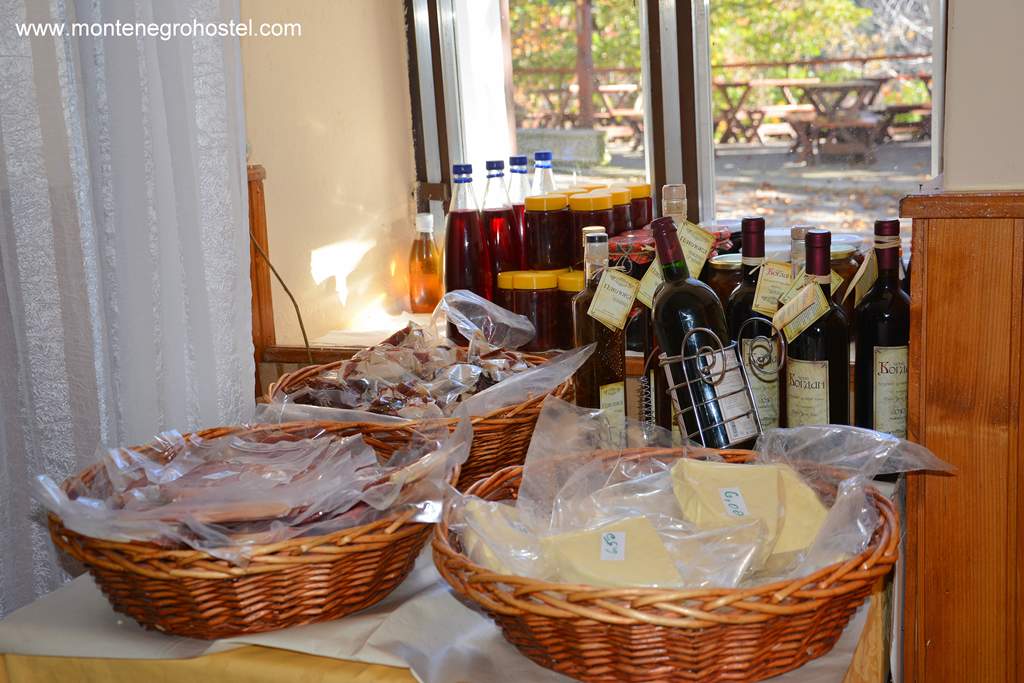
Montenegro is well known for its kind of wine, Vranac. This sort started to grow around Skadarsko Lake, in a place called Crminca. The renaissance of this sort was the Ćemovsko field and enterprise “Plantaža”. This firm produces a famous wine product, which is a favorite on every meridian. Besides Vranac, the autochthon white wine sort is Krstač, which is recommended to serve with fish, other sea specialties, and white sorts of meat. Besides wine, a special ritual is drinking beer.
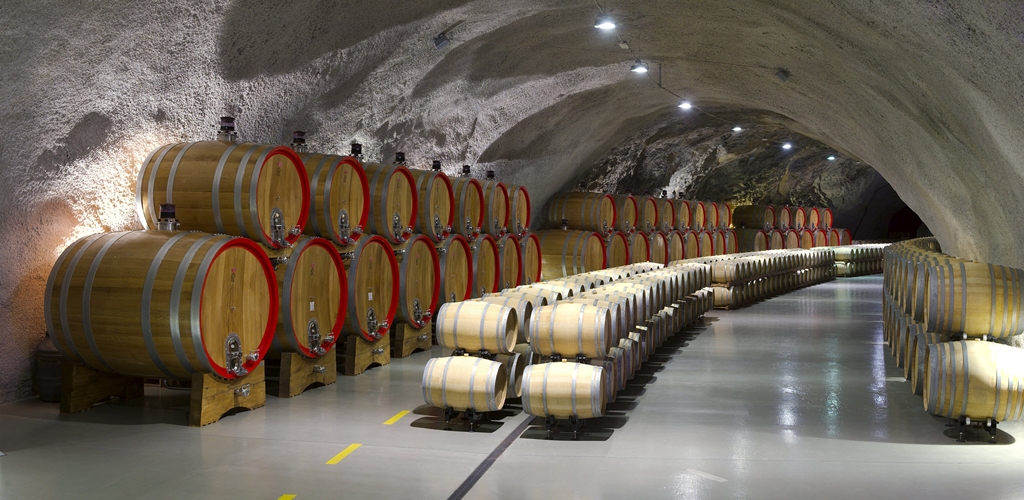
Domestic beer from Nikšić (Nikšićko pivo), with a more than one-hundred-year tradition, this brand is known far away from its country. Apart from the alcohol, lives traditionally in fewer alcoholic drinks, such as medovina (honey wine), or vodnjika, a drink made of wild pear. Those drinks are made by an old, traditional way of fermented honey or fruits, then with the drainage of the drinks-something linked preparation of wine.
Montenegro Hostel Team
MOUNTAIN CUISINE
MOUNTAIN CUISINE IN MONTENEGRO
The traditional way of living is still alive in the high Montenegrin mountains. Clean, fresh air, many water springs, good valleys, and healthy flora make an ideal area for healthy white flocks and maize, buckwheat, and potato cultivation.
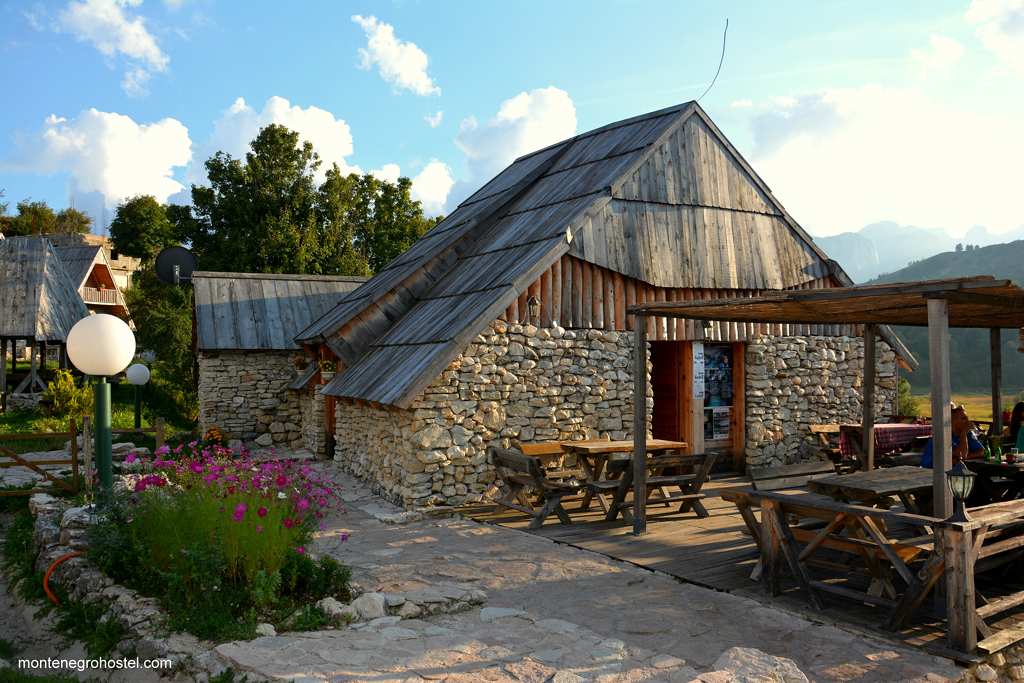
Milk pours from pasture grounds, then we make cheese and cream out of it. It is difficult to imagine cooked potatoes without them. It is also an appropriate addition to lamb meat prepared " under the sač" (under the smoldering coal).
KAČAMAK (hardcore mush)
Where lies the secret of a good mash, a traditional meal made of potatoes, flour, plums, cheese, and milk? Very simple question. Potatoes, cheese, cream, the techniques of the mixture of those things, and putting them together are really good if you drink domestic yogurt with it. The taste of kačamak depends on the quality of the ingredients.
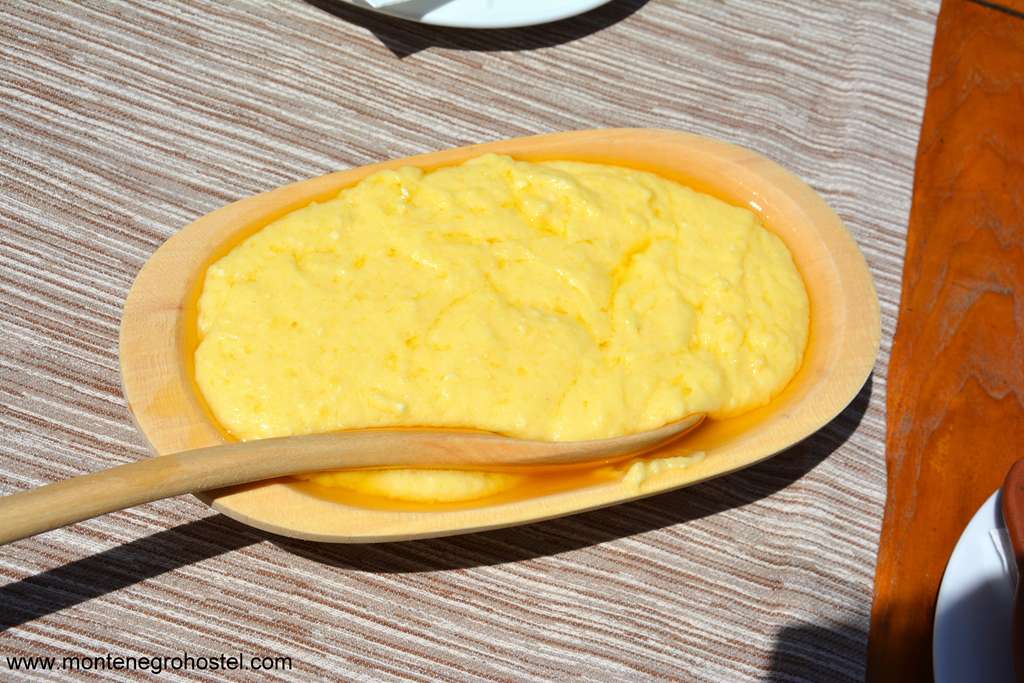
They are put in a wooden item for beating kačamak until it becomes compact mush. The answer is known shepherds from katun who prepare and eat it in a very traditional way, from the steamer.
SMOČANI KAČAMAK (SPICED KAČAMAK)
For the preparation of this mountain delicacy, we have to put a kilo of potatoes into a streamer. We have to salt potatoes and add a few palms' breadth of maize or wheat flour. You cook potatoes without peeling them, and then peel them and cook them again with flour. After adding flour to kačamak, we make a hole in the middle and let it cook for half an hour. Spill out more liquids after removing them from the cooking stove, and then start beating until you get a unique soft surface.
It is not an easy and quick job, and you have to have strong hands and a lot of willingness. That is why this part of the preparation is usually predetermined for men. The rest of the family watches and encourages him. In such a compact pile, we add a few spoons of cream and a piece of old cheese. So once again, we have to mix it in one compact pile of gorgeous aroma and taste. Thick yogurt serves with this meal.
POPARA (BREAD, MILK, WATER, SALT, CHEESE)
Popara is a characteristic Montenegrin meal and is made out of pieces of stale bread, milk, a piece of cheese, and dry plum, or something else we could find in the kitchen at that moment.
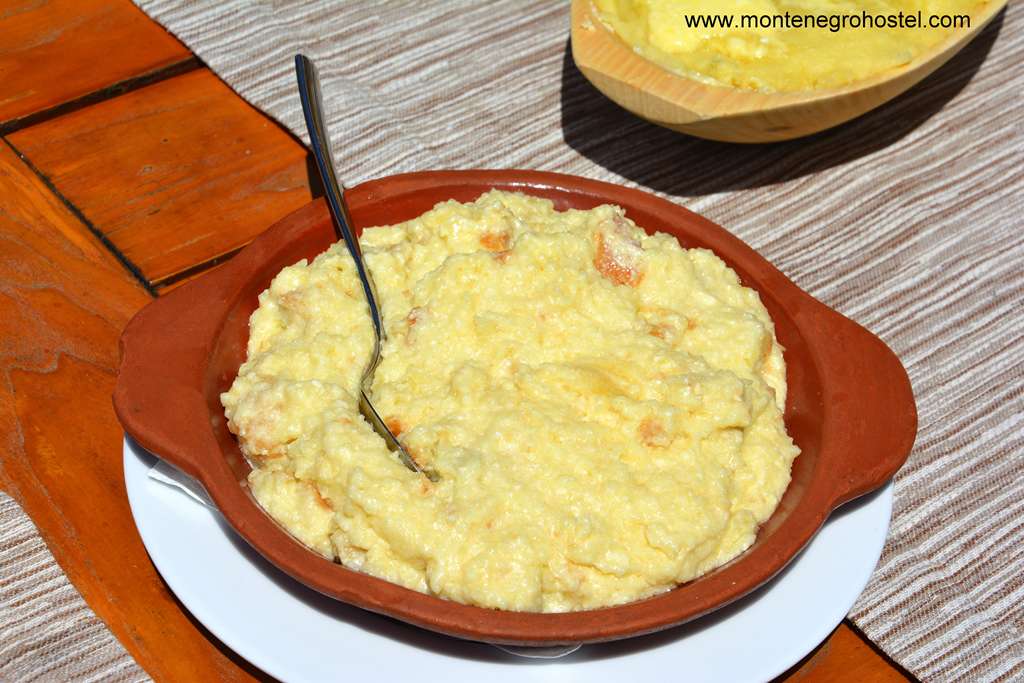
But what is important is to know that you have to blend it all the time. When it is finished, it is very tasty and very caloric, so we often offer it for breakfast with a glass of milk.
CICVARA (MELTING COW CHEESE AND FLOUR)
This strong, caloric meal is made of cow cheese and flour that you put together in a pan to melt at low temperatures. If for preparing kačamak you need muscles, for preparing cicvara you need to have good cooking techniques. A traditional way of preparing starts with cutting the cheese into small pieces and dissolving it without oil. Put it in a pan and fry at a low temperature.
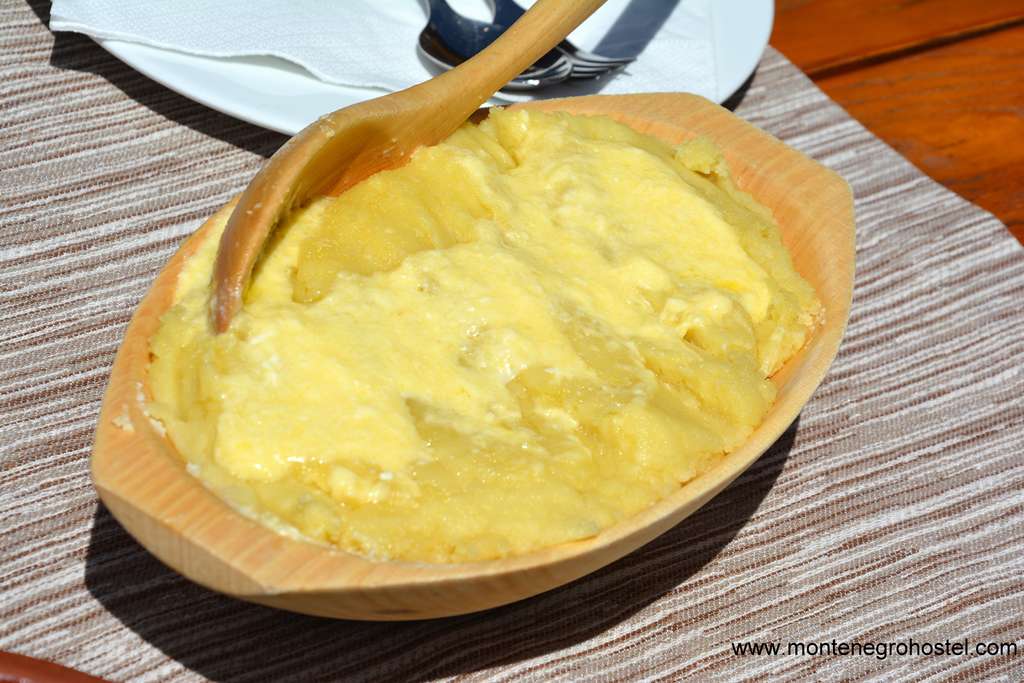
The secret is in the new cheese itself that releases its liquids. In such cheese, we add flour and mix until it becomes compact. The pile is getting thicker and releases fat, so it is a sign that cicvara is close to being ready for eating. When fat is withdrawn, cicvara is ready, and then you can add salt. Cicvara is best if we serve it with potatoes and yogurt.
MEAT UNDER THE "SAČ"
The taste of roast lamb meat, goat meat, or veal prepared in combination with potatoes in crepulja under the "sač" is difficult to imagine. You have to taste it. The secret of its taste and aroma la in an approved combination of crepulja, a terrain dish for roasting, and sač, a metal cover over which we put zeal. All you need for this meal could be finished in just a few steps. We put salted and peppered meat, with other spices and with potatoes, on the plate.
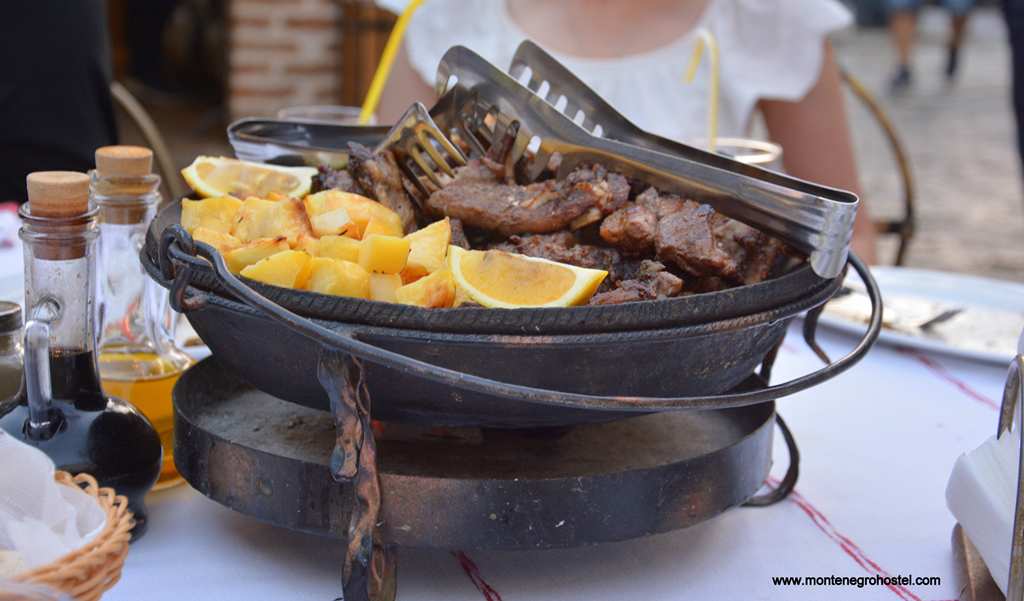
Then we cover it and put zeal over it. The zeal keeps the aroma and taste of this meal. There's a specific ritual when it's cooked in front of people’s eyes. You can uncover the zeal and let the aroma of meat and potatoes make them drunk. It is a holiday for all of the senses.
COOKED VEAL
Veal prepared in the steamer is very simple to prepare, a very healthy and tasty meal. It depends on a steamer, but a kilo or two is enough for four people; for more people, you need a bigger steamer and more veal, like for the raštan or beans. Celery is bound to be part of this meal, besides meat, then pepper, salt, basil, onion, the fresh paprika, if you like, you can put chili, and a few carrots. When you make a meal for four people, use a medium-sized onion and put it on the grill till it becomes brown and produces some liquid.
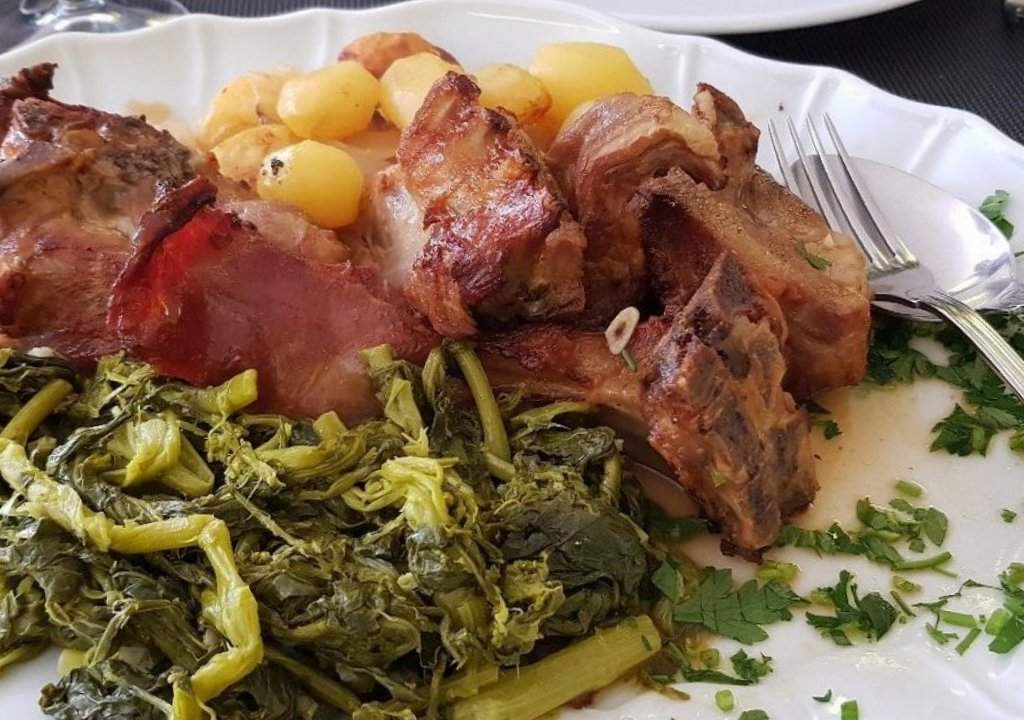
After that, put such prepared onion in the water together with the meat. Water has to cover the meat. Then we add celery, pepper, paprika, basil, and carrots. Take out cooked meat from a steamer, put it on a platter, pour with one or two ladles of soup, and leave until you start the second part of preparing. In a soup where we cooked meat, add noodles, and it will be hors d’oeuvres. Meat is getting colder until we cook soup, and it is ideal to serve with mustard and horseradish. You enjoy this meal drinking white wine.
LAMB MEAT IN MILK
Except for potatoes, milk, and milk products, meat was hardly ever served in traditional Montenegro. The reason is simple: the flock was a life resource. But, lamb meat was delicious for special occasions and of course, the key element at the table for guests or travelers, because the cult of hospitality understood that you, on such occasions, serve the best you have. One of the extraordinary mountain meals was lamb meat cooked in milk.
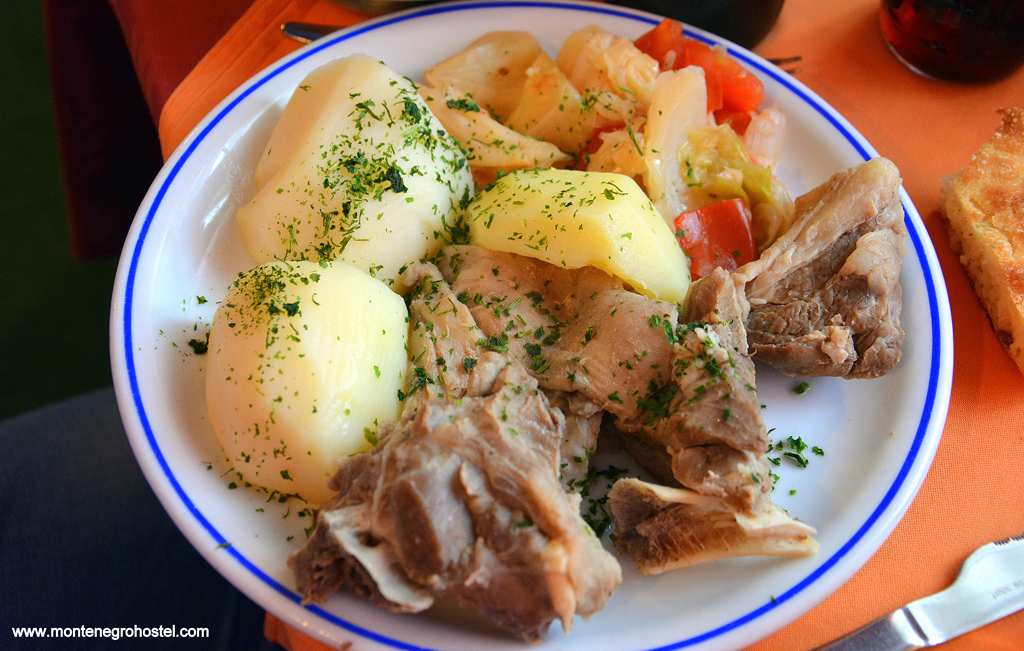
For the preparation of this traditional delicacy, we need a kilo or two of shoulder joint lamb meat and the same quantity of milk. We add carrots, kilo potatoes, laurel, pepper, salt, and parsley or celery. We poured meat with milk into the steamer and then added vegetables and spices. We cook potatoes separately. Cooked meat we cut and put in a deeper dish, add potatoes, carrots, and all that we pour with the milk that we cooked. Baby-goat meat is prepared similarly with more spice-garden sage, for a better aroma. Specific taste that sticks to the palate and is somewhere between salty and sweet, with potatoes under the "sač" (under the smoldering coal) giving an unbelievable taste. If it is known that lambs eat only vegetation in which the dominant is curable sorts of flora, it is clear why this meat has a high place in a Montenegrin's diet.
PAPRIKA IN JARDUM (SHEEP MILK)
For this meal, preparation is important to know that jardum or grušavina is a special kind of sheep milk. Deep autumn pasture gives its specific taste, and that is why this milk is thicker and stronger, or fatter than usual. We prepare the jardum with continuous mixing of salt and milk at a low temperature. When a fume appears at the surface of milk, it is a sign that the jardum is ready.
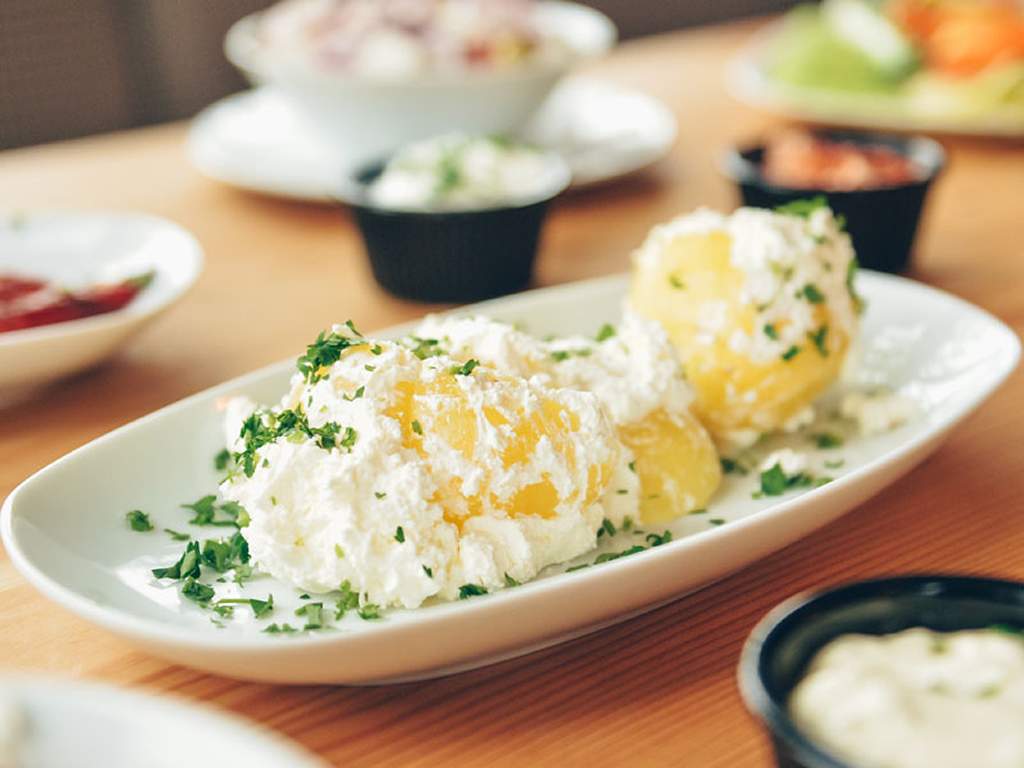
It has to be drunk cold, and it could be served with a meal or after. But for a glass of jardum, we need a good base in our stomach. The second part of this meal preparation starts with cleaning paprika and then putting it in a wooden dish to sit for a few days to become soft. Over it, we pour jardum, add salt, and leave it to stay there for two weeks. It is a kind of pickled food.
PRIGANICE
Priganice (water, flour, salt) is one of the characteristics of Montenegrin cuisine. These are small dough balls that can be sweet or salty. Some kinds of priganice can also have a square shape. Priganice are excellent with cheese or cream, as well as with plum jam, but the best taste they give is with honey. There are several kinds, but the most frequent are so-called zetske (Zeta is an urban area near the capital, Podgorica) and Montenegrin.
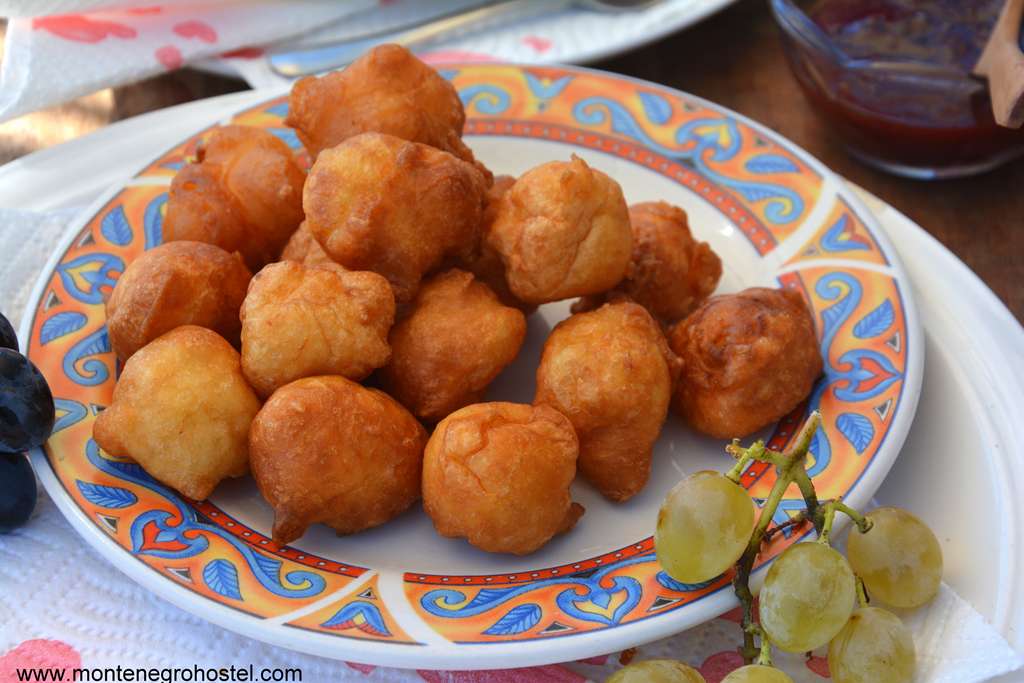
Zetske priganice are made with an equal quantity of milk and water, scrambled eggs, and flour. Put this mixture, neither thick nor watery, with a spoon in the hot, oily pan. It is made without leaven, so we also call it raw priganice. This kind is very tiny but very tasty. Montenegrin priganice are more like small balls, and their preparation is a bit different. Add the flour to warm water with leaven, and after mixing of dough, mix it and fry it in a hot oil pan. We make small balls with a spoon and put them in a pan until they become reddish.
HONEY
In Montenegro, there are 3000 species of flora. For comparison, on the whole, the Balkan Peninsula has 5000 sorts of flora, and Montenegro is the twentieth part of the Balkan area. The diversity of landscape and climate is suitable for this flora wealth, and such different floras are a true buffet for bees and more. Every mountain and hill has its flora cover, and that is why honey has a specific taste from place to place.
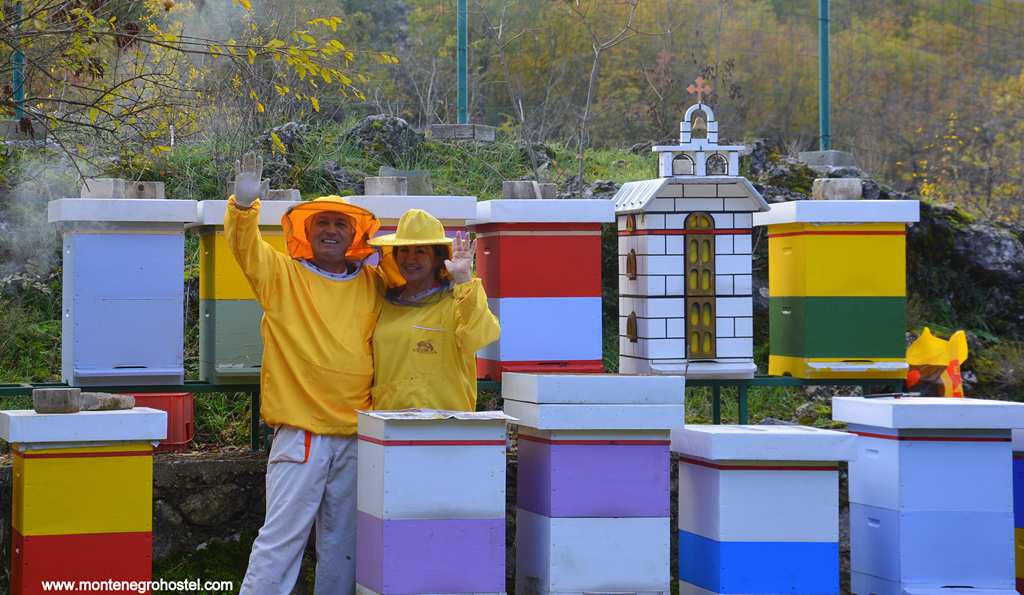
In a bee place on the seaside and around Skadarsko Lake, there are so many garden sage, honeysuckle, and on the eastern side of the mountain Rumija, horse chestnuts. Valley and mountain honey, from the pastor’s nectar, are real magic drinks, and honey from the forest has stronger power. Where there is honey, there is also honey wine, the traditional drink of ancient Slovenes that is being made even today, especially in Cetinje and the Lovcen mountain area.
PATIŠPANJ (CAKE OF FLOUR, SUGAR, AND EGGS)
Among sweets in old Montenegro, the most frequent and the most universal is patišpanj, a cake made of flour, sugar, and eggs. This is a constant part of meals on all solemn occasions. You cannot imagine a wedding, family pastor’s day (slava), or some other celebration. Besides the priganice with honey, patišpanj is certainly the most favorite Montenegrin sweet.
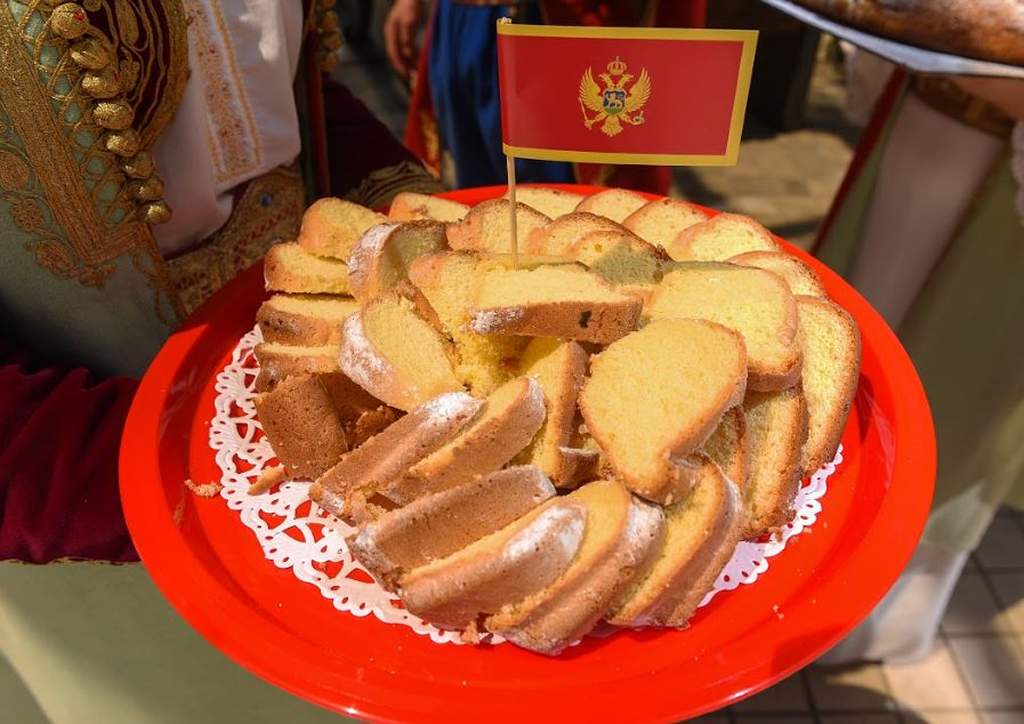
It is very simple to make. You need ten eggs, ten spoons of sugar, and ten spoons of flour. After you mix it, you have to bake it, just for half an hour, at a medium temperature. Nowadays, some also put cooking powder into the mixture.
DRIED FIG, SWEET CHESTNUT, KASARONJE (WATER PLANT)
The floury line of the dried fig, an airy bag of sweet chestnuts, or a basket of picked-up kasaronja (water lily, a plant that lives only on Skadar Lake, edible, tastes similar to chestnut) were always characteristic of holidays and the Christmas table. Fig dryness was a way to save this precious fruit for cold days during the wintertime, especially at the seaside, around Podgorica and Skadar Lake. Different sorts of fig trees were characteristic of the Crmnica and Podgorica valley.
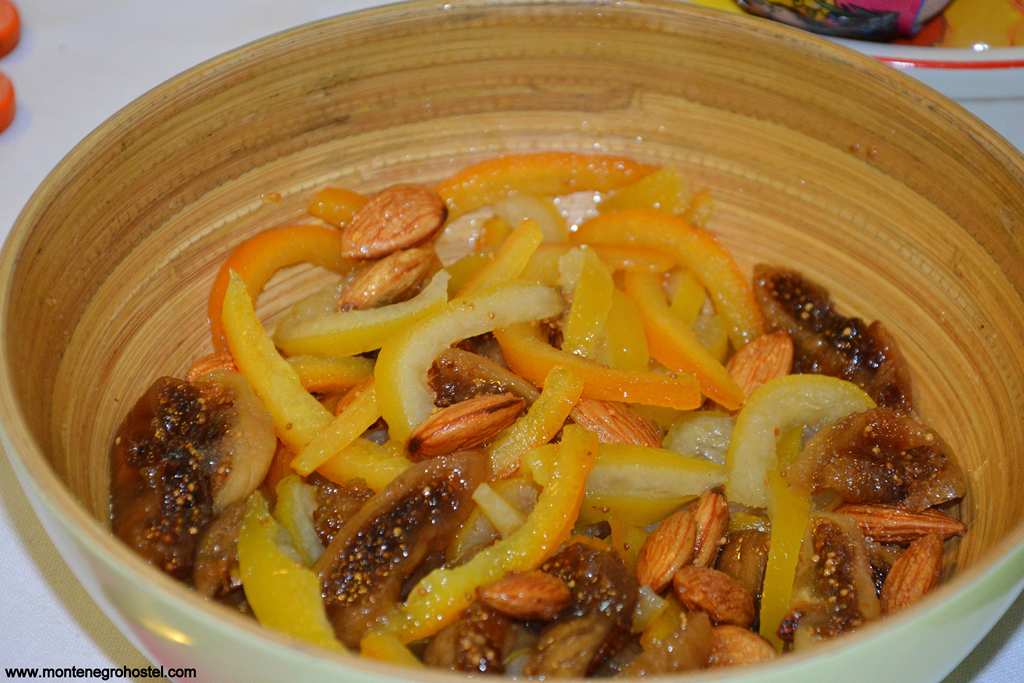
From the earliest sort, so-called petrovača, which starts at the end of June at the beginning of July (until Petrovdan, orthodox saint), until the black sedmakinja (the sort which produces fig trees seven times during one year) from Crmnica. It’s about the sort that starts to give figs in July until the autumn. For kasaronja, a water plant from Skadarsko Lake, which lives in water, doesn’t produce its fruit without rain. The tastes of its three-cornered fruits that look like sweet chestnuts or almonds have to be picked when up as green. It is very tasty and esteemed.
Montenegro Hostel Team























































